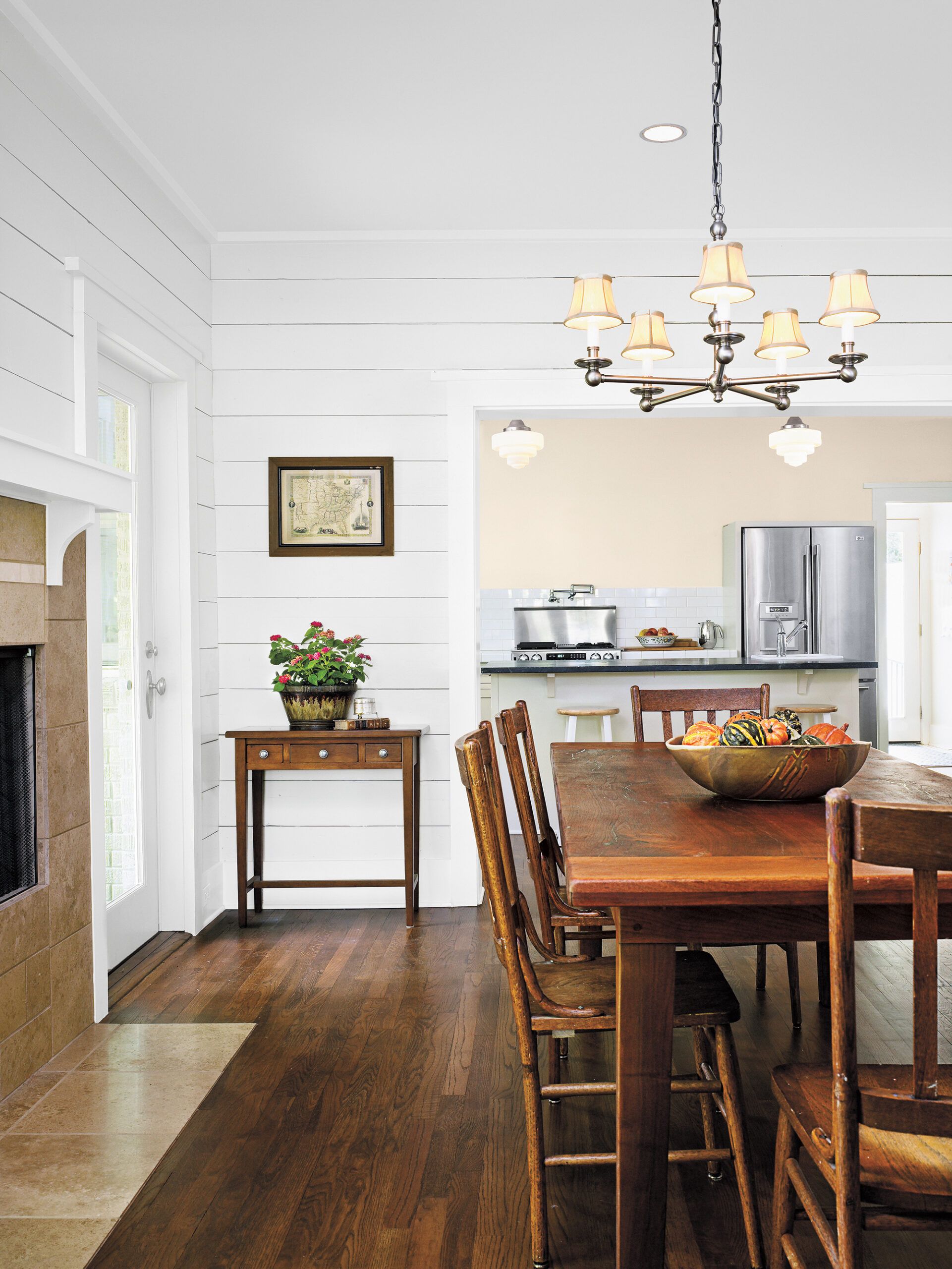Prefinished wood floors have revolutionized the way homeowners approach flooring installations. These ready-to-install boards offer a perfect blend of beauty, durability, and convenience, making them an increasingly popular choice for modern homes. With a wide array of species, colors, and finishes available, prefinished wood floors can suit any style while adding warmth and value to your living space.
Easy to Install Prefinished Wood Floors
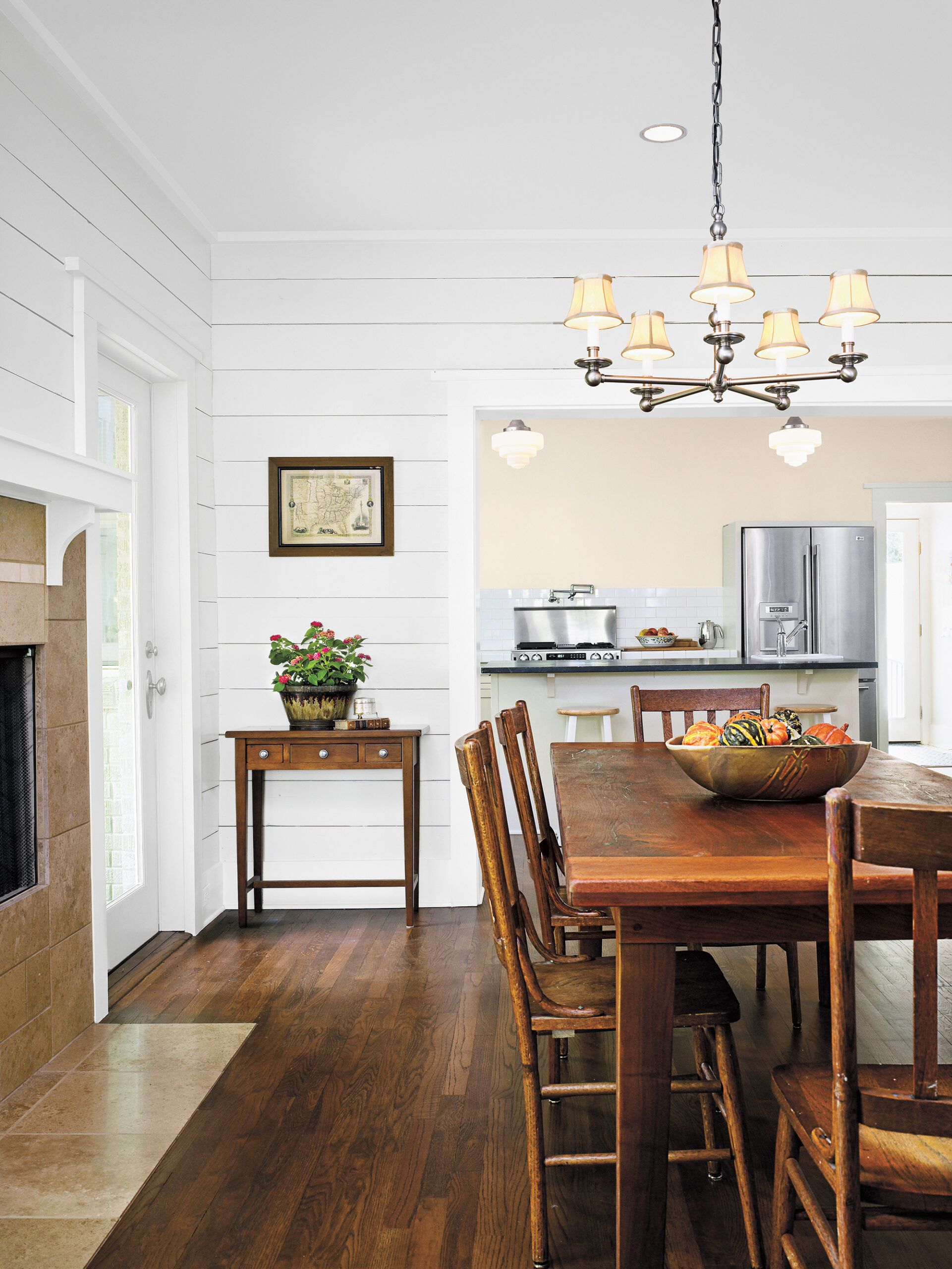
Installing hardwood flooring is one of the most effective ways to enhance your home’s aesthetics and value. Prefinished solid-wood flooring has made this process more accessible than ever before. These wood strips and planks come with a factory-applied finish, typically consisting of multiple layers of aluminum-oxide-infused polyurethane cured under UV lights. This results in an exceptionally durable surface that outperforms on-site finishes applied to unfinished wood.
One of the most appealing aspects of prefinished wood floors is their immediate usability. Unlike traditional hardwood installations that require days of sanding, staining, and finishing, you can walk on a prefinished floor the same day it’s installed. This convenience, combined with the wide variety of species and styles available, makes prefinished wood flooring an attractive option for homeowners looking to upgrade their spaces quickly and efficiently.
Similar to shown: Rivermont oak in Saddlebrook, about $7.60 per square foot; mohawkflooring.com for dealers
Vitals of Wood Flooring
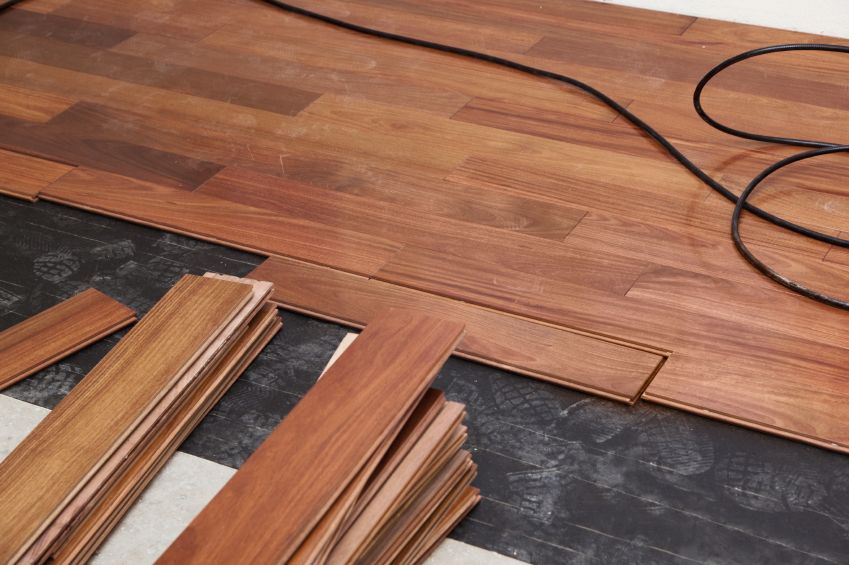
When considering prefinished wood floors, it’s essential to understand their key characteristics:
Cost: Prefinished wood flooring typically ranges from $6 to $12 per square foot, according to Angi. although the cost may vary depending on the species and grade. While this is about 30% to 50% more than unfinished strips, you’ll save on installation costs as there’s no need for on-site sanding and finishing.
Maintenance: Regular sweeping or vacuuming with a soft brush attachment is crucial to remove abrasive grit. For deeper cleaning, use a microfiber cloth and a manufacturer-recommended cleaner. Avoid oil soaps, as they can break down the finish and leave a dirt-attracting residue.
Durability: With proper care, prefinished wood floors can last the lifetime of your home. Warranties range from 10 to 100 years, covering wear-through of the finish. However, these warranties typically don’t cover dents, surface scratches, or gapping and warping.
Installation: While a handy homeowner can install prefinished wood flooring in a medium-sized room over a weekend, professional installation is also an option, although it will come with added expenses.
Is a Prefinished Wood Floor Right for You?
Before deciding on prefinished wood flooring, consider these pros and cons:
Pros:
- Easy installation: DIY-friendly and can be completed in a single day.
- Long-lasting finish: Factory-applied coatings typically outlast on-site finishes by about 30%.
- Durability: Like all solid-wood flooring, it can be sanded and refinished multiple times.
- Immediate use: No waiting period after installation.
- Wide variety: Available in numerous species, colors, and finishes to suit any decor.
Cons:
- Higher initial cost: More expensive than some other flooring options.
- Sensitivity to moisture: Not suitable for below-grade installations or high-humidity areas.
- Potential for scratches and dents: While durable, it’s not impervious to damage.
- Limited customization: Finish options are predetermined, unlike site-finished floors.
- Visible seams: Beveled edges can collect dust and be more noticeable than site-finished floors.
Shop Smarter: Bevels
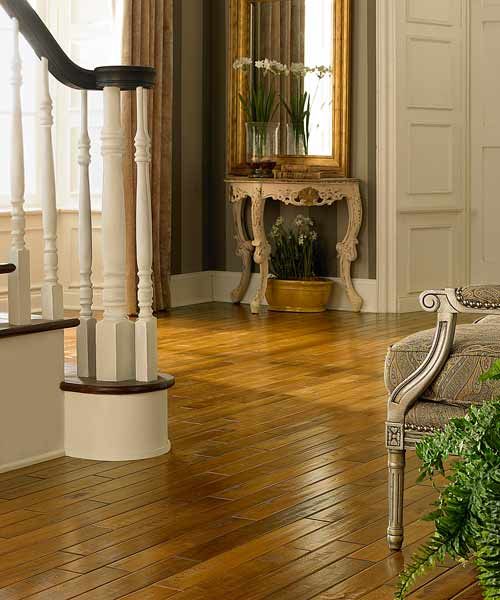
Most prefinished wood flooring features beveled edges and ends, which serve multiple purposes. These bevels protect the finish from chipping during installation and help hide any unevenness between boards. The depth of these bevels can vary, with some as deep as ⅛ inch and others featuring barely noticeable micro-bevels.
When choosing your flooring, consider that deeper grooves may collect dust and dirt, potentially making cleaning more challenging. For those who prefer a seamless look similar to site-finished floors, some manufacturers offer bevel-less “square-edge” flooring. However, this option works best when the subfloor is perfectly flat to avoid exposed edges.
Shop Smarter: Width
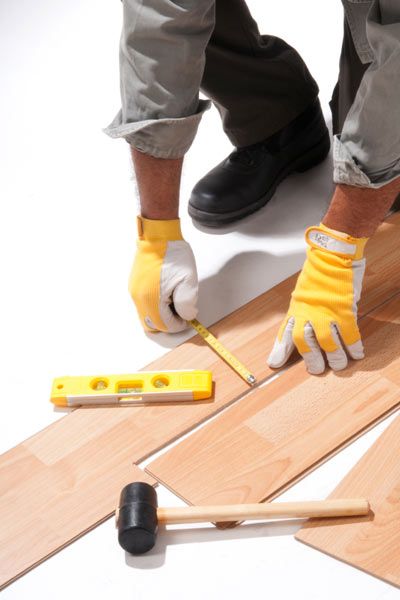
Wood flooring is available in various widths, typically categorized as strips (up to three inches wide) and planks (wider than three inches).
- Narrow strips: Generally less expensive and offer a more traditional look.
- Wide planks: Create a rustic or contemporary feel, depending on the wood species and finish.
- Mixed-width planks: Offer a unique, custom appearance and can help reduce waste during installation.
Keep in mind that wider boards are more susceptible to expansion and contraction due to humidity changes, potentially leading to more noticeable gaps or warping over time.
Shop Smarter: Thickness
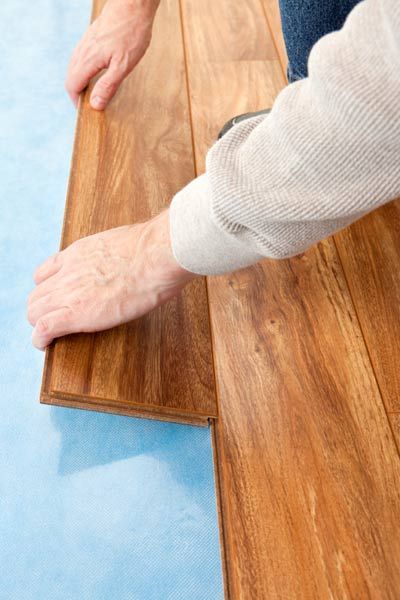
The standard thickness for solid wood flooring is ¾ inch, but prefinished boards can be found in thinner options, some as slim as 5/16 inch. While thinner boards can be advantageous in certain situations, it’s important to consider their long-term implications:
- Ultra-thin boards (less than ½ inch): May only allow for one or two sandings over their lifetime.
- Standard ¾-inch boards: Offer the most durability and can be refinished multiple times.
- Thinner boards (½ inch or less): Useful for remodels where floor height is a concern, but have a shorter lifespan.
Shop Smarter: Grade
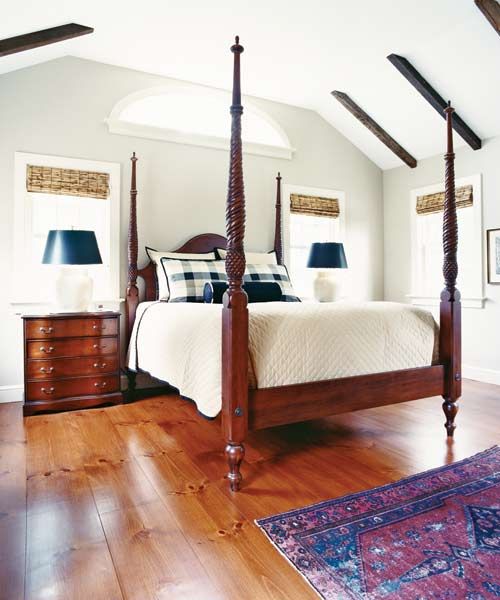
Wood flooring is classified by grade, which refers to the number of surface defects, color variations, and board lengths. Understanding these grades can help you choose the right flooring for your needs and budget:
- Clear grade: Minimal knots and color variations, longest boards.
- Select grade: Some color variations and small knots, mix of long and short boards.
- 1 Common: More pronounced grain patterns and color variations, shorter average board length.
- 2 Common: Significant color variations and knots, shortest average board length.
Remember, all grades will create a structurally sound floor. The choice often comes down to personal preference and whether you view characteristics like knots as defects or desirable features that add character.
Shop Smarter: Grain
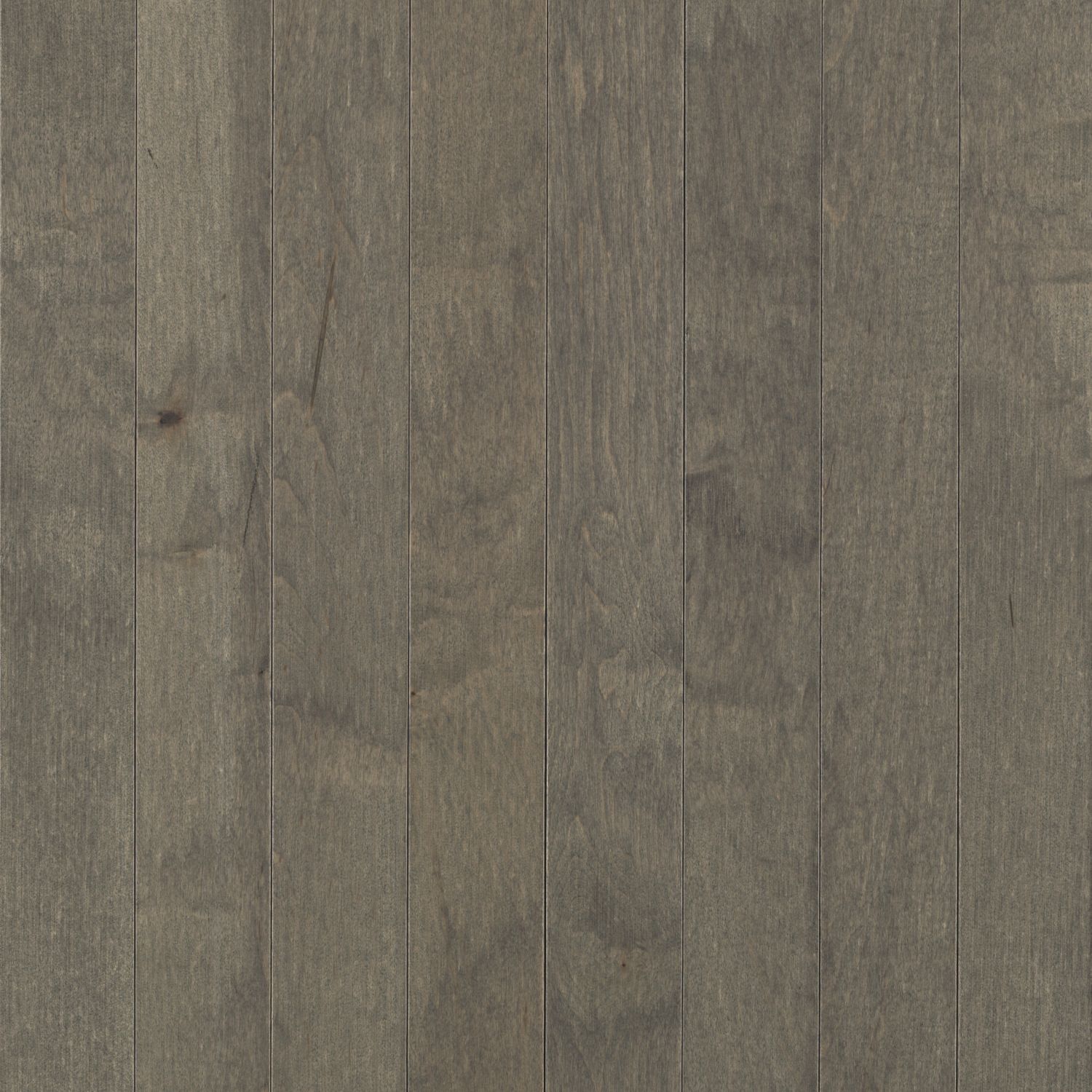
When boards are cut from a log, they may be flatsawn, or plainsawn, so that the growth rings are roughly parallel with the face, creating a wavy grain pattern, or quartersawn, with growth rings perpendicular to the face and a straight grain. Most wood grades include a mixture of both, or you can opt for all quartersawn boards, which are less prone to shrinking, swelling, and cupping. But expect to pay a premium price for this cleaner-looking flooring.
Calculating Costs
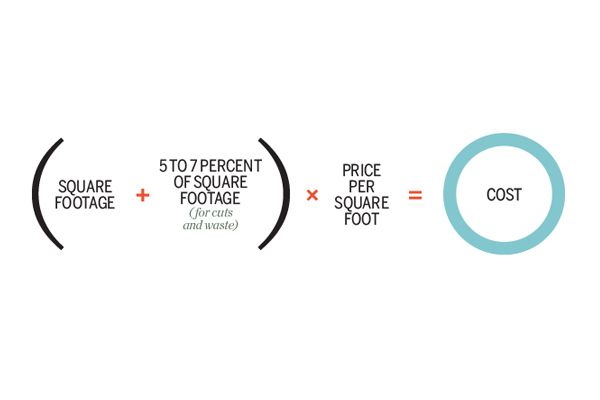
To estimate the cost of your new prefinished wood floor, measure the room’s square footage and add a percentage for cuts and waste (5% for strip flooring, 7% for planks). Then, multiply the total by the price per square foot. Remember to factor in additional costs such as underlayment, trim, and installation if you’re not DIYing the project.
Heed Hardness Ratings

The Janka hardness rating determines a wood species’ resistance to dents and wear. This scale measures the force required to embed a steel ball into the wood surface. Here are some popular wood species and their Janka ratings:
- Brazilian Walnut (Ipe): 3,684
- Hard Maple: 1,450
- Red Oak: 1,290
- White Oak: 1,360
- American Cherry: 950
While harder woods generally offer better resistance to wear, consider that some softer woods with pronounced grain patterns can hide minor scratches and dents more effectively.
The Lowdown on Top Coats
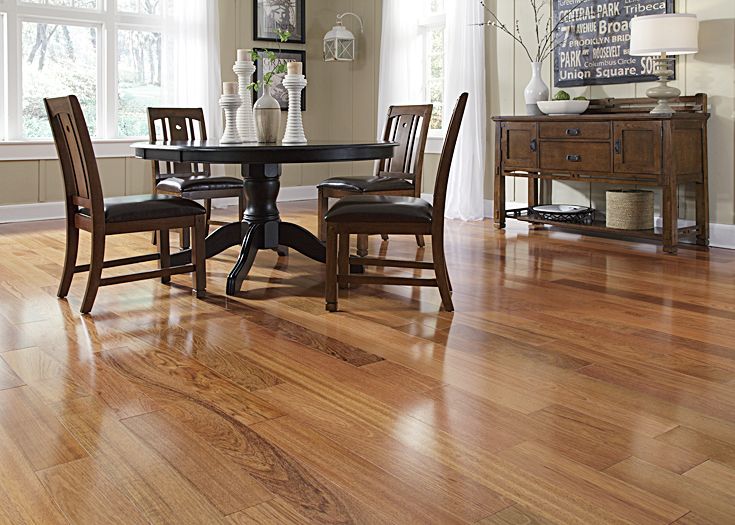
The durability of prefinished wood flooring largely depends on its top coat. While manufacturers may highlight the number of finish layers, the thickness of these layers can vary significantly. To get a better idea of durability:
- Bring samples home and try to scratch them.
- Consider the sheen level – higher glosses intensify color but make scratches more visible.
- Expect to maintain high-traffic areas with a screen-and-poly every five to ten years.
- Plan for potential sanding and restaining every 15 to 30 years, depending on wear.
Remember that a family with kids and pets may need more frequent maintenance than a household with less foot traffic.
Pick Your Prefinished Wood Floor Board
White Maple
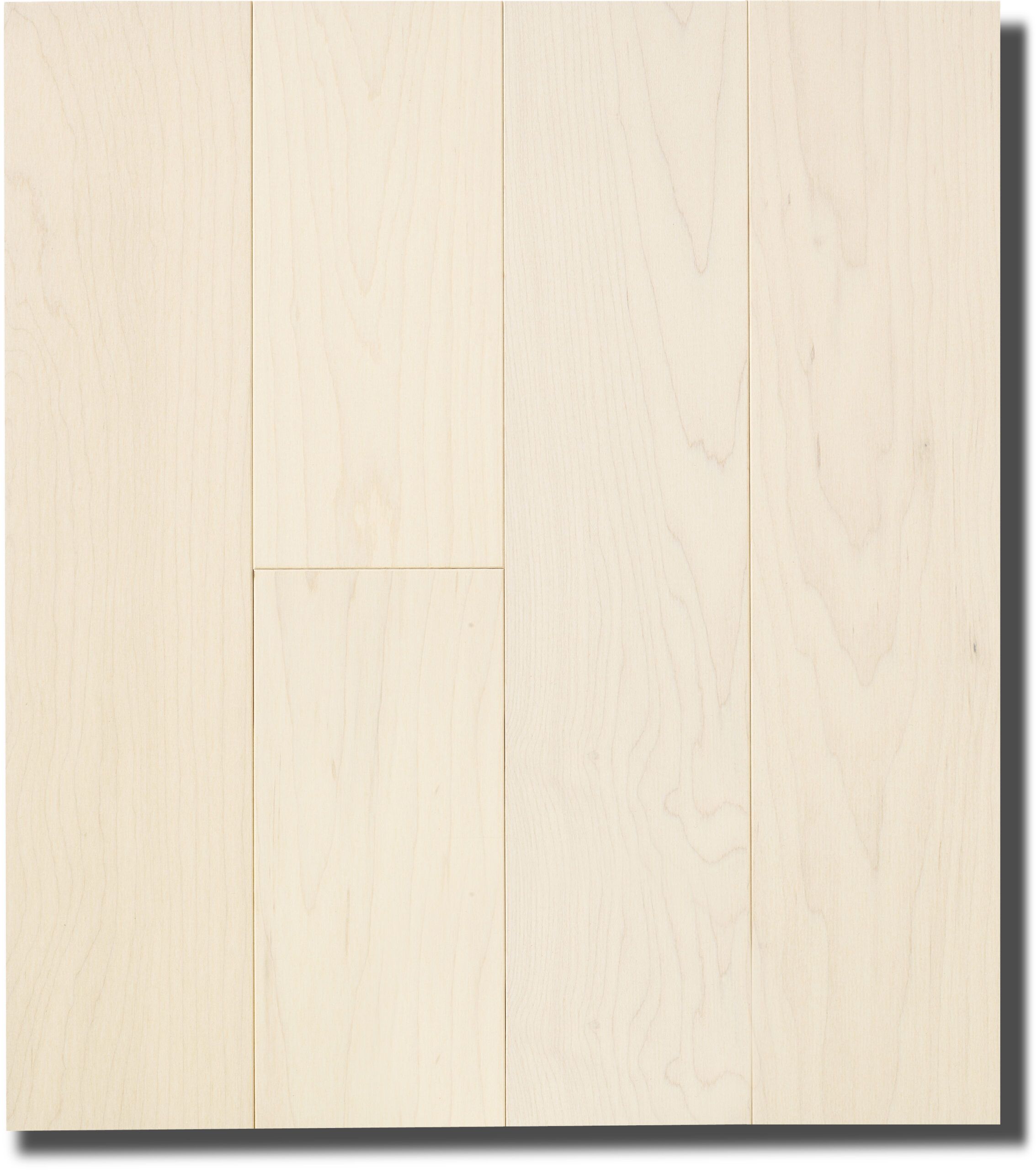
Price: $4-15 per sq. ft. according to Angi
Maker: Armstrong
Highlights: Micro-bevels and a white-washed stain create a Scandinavian vibe.
White maple offers a clean, contemporary look that brightens spaces and complements a variety of design styles. Its tight grain pattern and light color make it an excellent choice for modern and minimalist interiors. The durability of white maple ensures that it can withstand daily wear and tear while maintaining its elegant appearance.
Natural Hickory
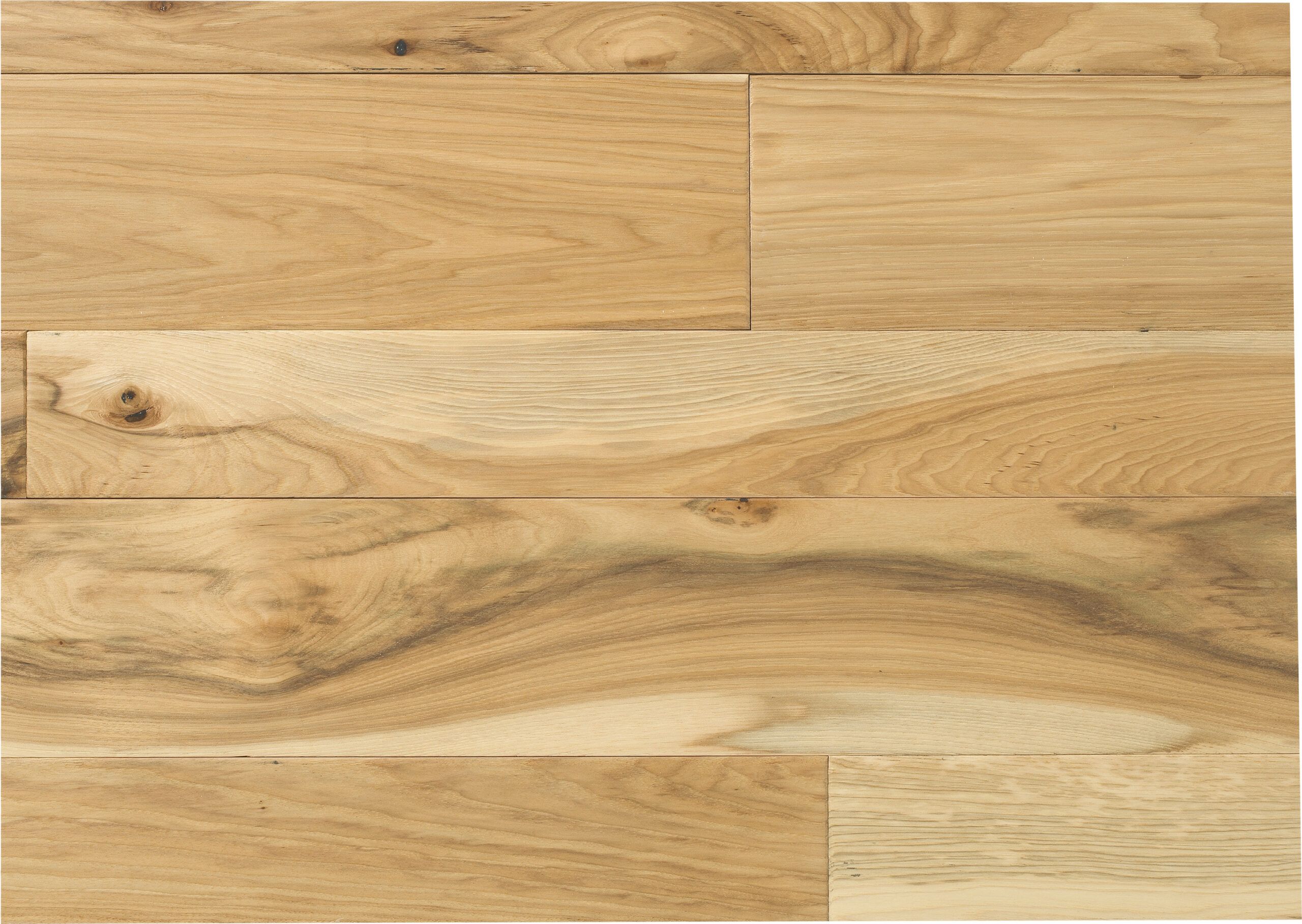
Price: $6-$14, according to Angi
Maker: Mohawk
Highlights: Alternating strips and planks make gapping less likely; a natural finish lets the grain’s beauty shine.
Natural hickory provides a rustic yet refined appearance with its distinctive grain patterns and color variations. Its durability makes it an excellent choice for high-traffic areas and homes with active families. The natural finish allows the wood’s inherent character to stand out, creating a warm and inviting atmosphere.
Traditional Oak
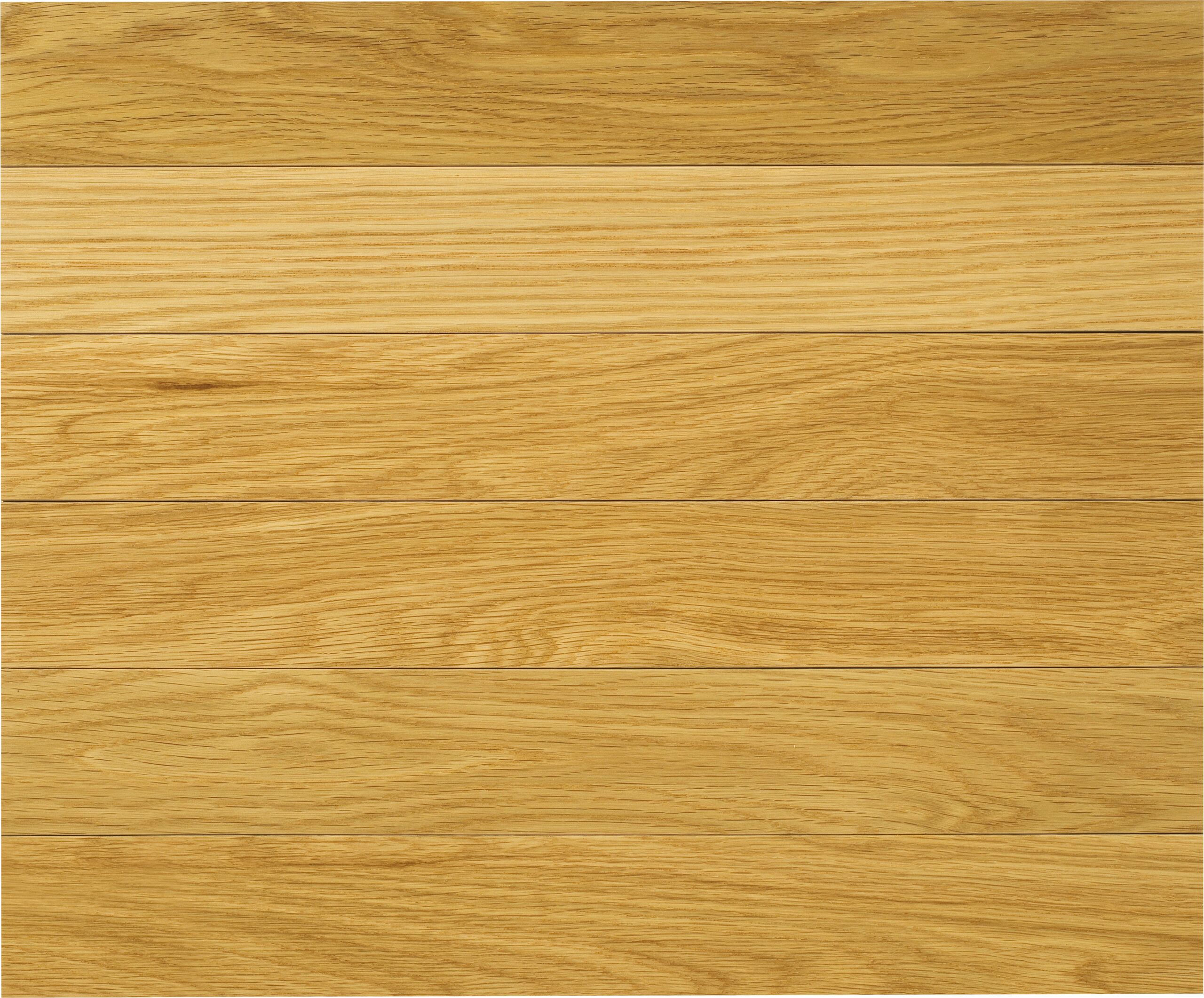
Price: $5-12, per sq. ft. according to Angi
Maker: Somerset
Highlights: High-gloss oak strips adapt to many styles; the strips have square-edge ends instead of bevels.
Also known as red oak, traditional oak remains a popular choice due to its timeless appeal and versatility. The high-gloss finish enhances the wood’s natural beauty, while the square-edge ends create a seamless look reminiscent of site-finished floors. This consistency in design allows traditional oak to fit seamlessly into various interior styles, from classic to contemporary.
Ebonized Oak
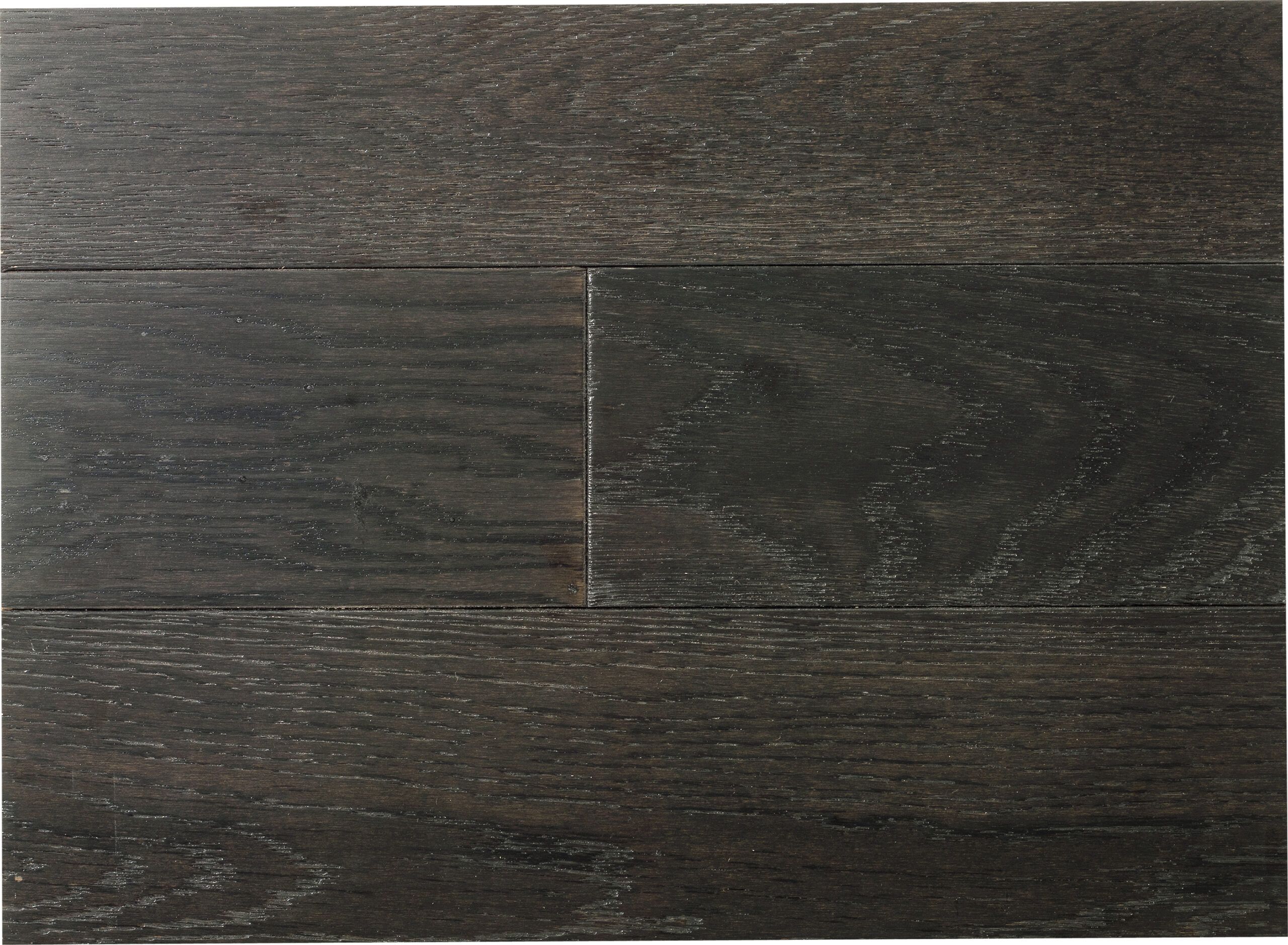
Price: $5-12, per sq. ft. according to Angi
Maker: Mullican
Highlights: Standard oak gets an unexpected update in a just-shy-of-black midnight stain and 5-inch planks.
Ebonized oak offers a dramatic, sophisticated look that can anchor a room’s design. The dark color adds depth and contrast, making it an excellent choice for contemporary and transitional interiors. Its striking appearance can serve as a focal point in any space, drawing attention to its unique finish and texture.
Warm Maple
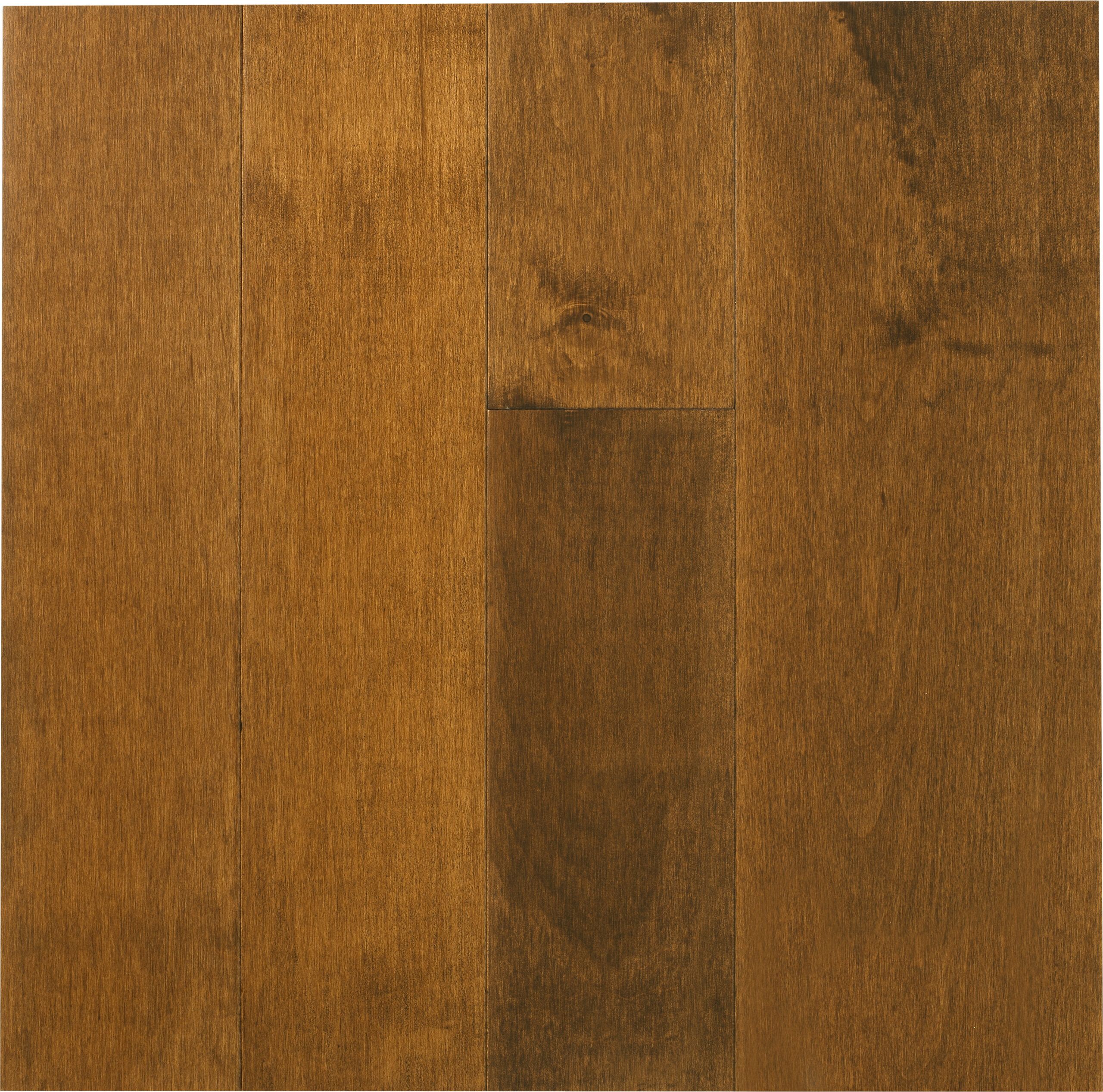
Price: $4-$15, per sq. ft. according to Angi
Maker: Bruce
Highlights: Uniform graining makes it look seamless; a reddish hue warms it up.
Warm maple combines the clean look of maple with a rich, inviting tone. Its uniform grain pattern creates a cohesive appearance, making it ideal for open floor plans and larger spaces. The reddish hue adds a touch of warmth and sophistication, enhancing the overall ambiance of your home.
Rustic Pine
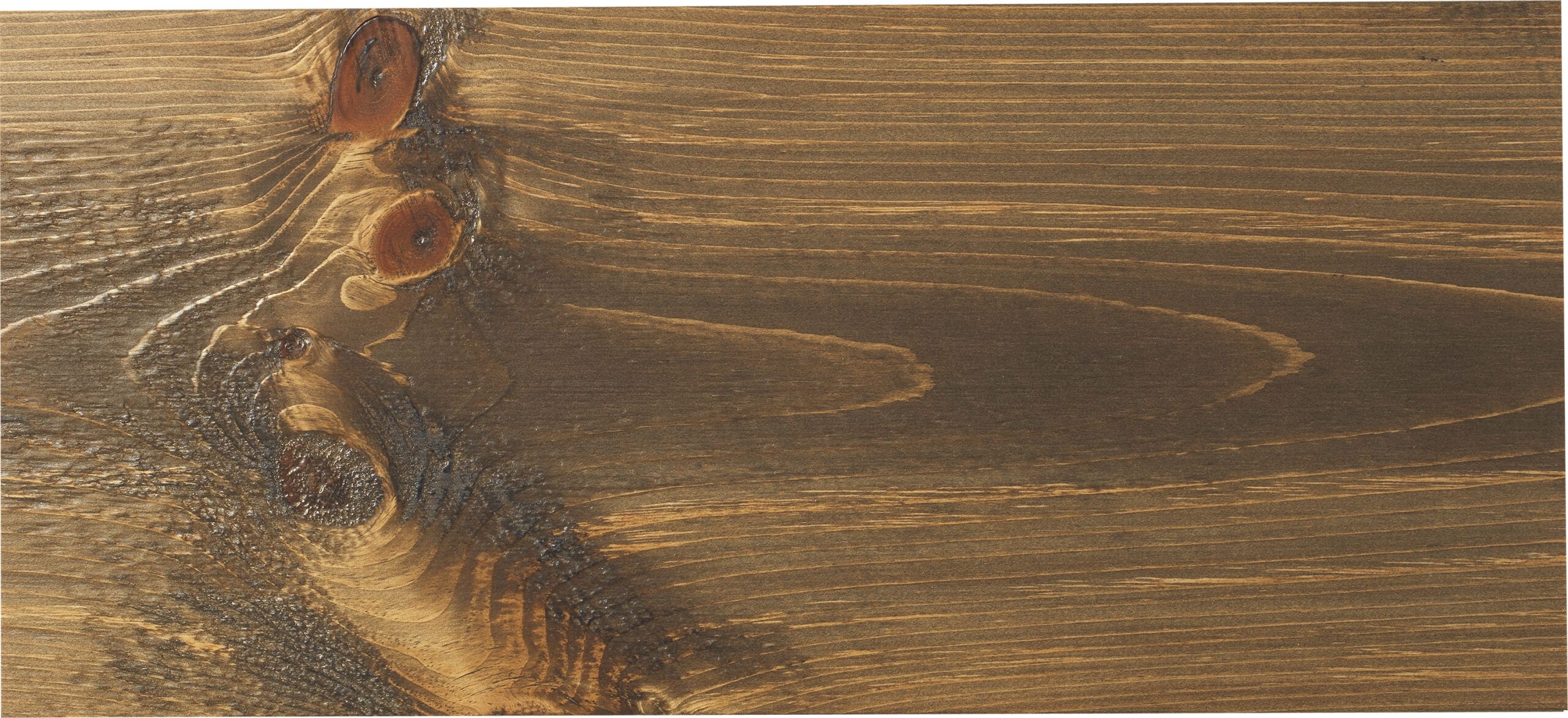
Price: about $10 per sq. ft.
Maker: Carlisle
Highlights: Plenty of knots and a textured watermill finish add character; comes in a variety of plank widths.
Rustic pine embodies the charm of traditional farmhouse style with its knotty appearance and varied plank widths. The textured finish adds depth and interest, making it an excellent choice for casual, lived-in spaces.
Textured Hickory
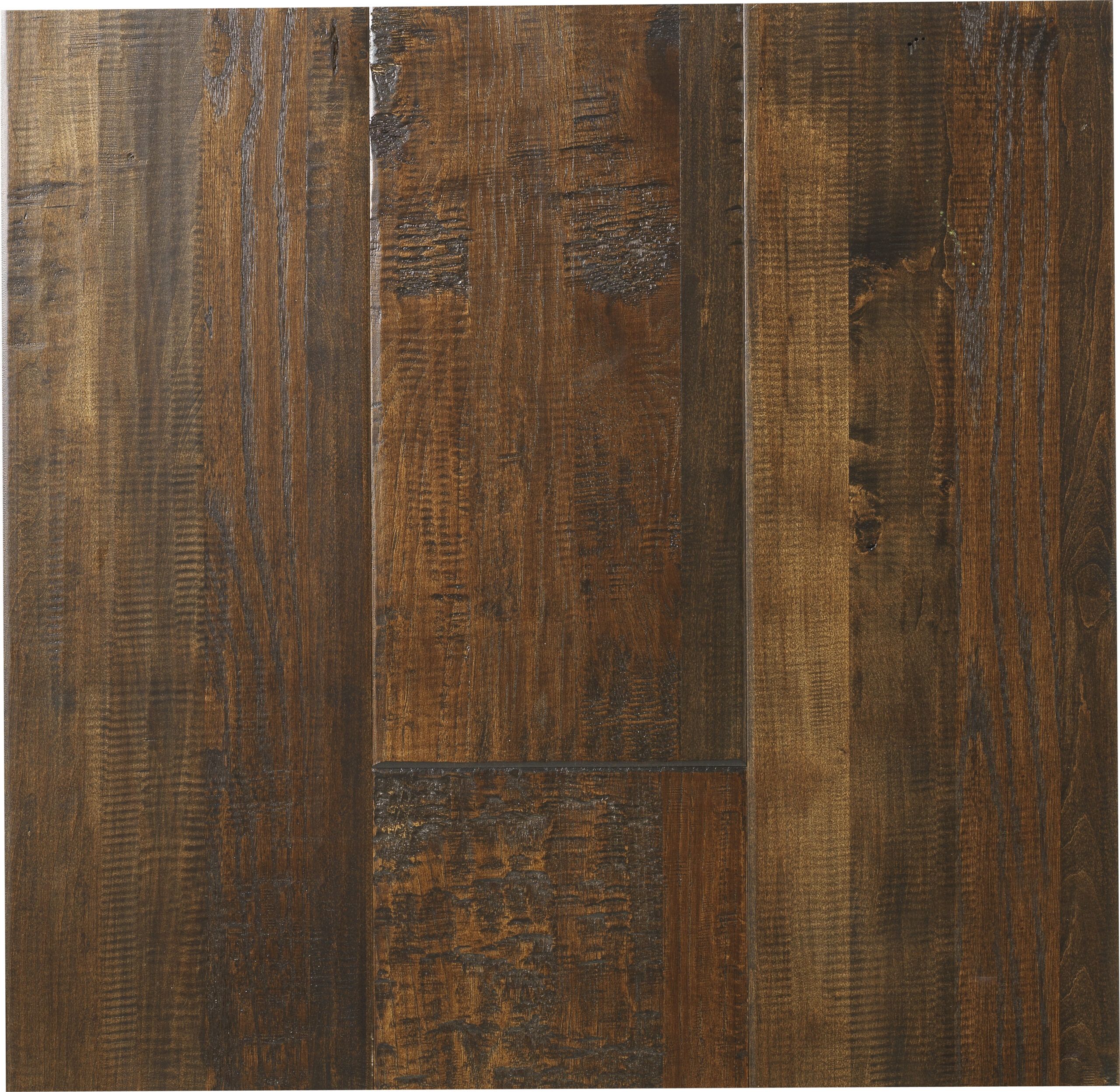
Price: $6-14 per sq. ft, according to Angi
Maker: Shaw
Highlights: Each 8-inch plank is made up of four solid boards for stability; has a vintage hand-scraped look.
Textured hickory offers the best of both worlds – the durability of hickory with the character of a hand-scraped finish. The wide planks and vintage look make it perfect for creating a warm, inviting atmosphere in any room. The textured surface not only adds visual appeal but also helps to conceal minor imperfections over time.
Shadowy Maple
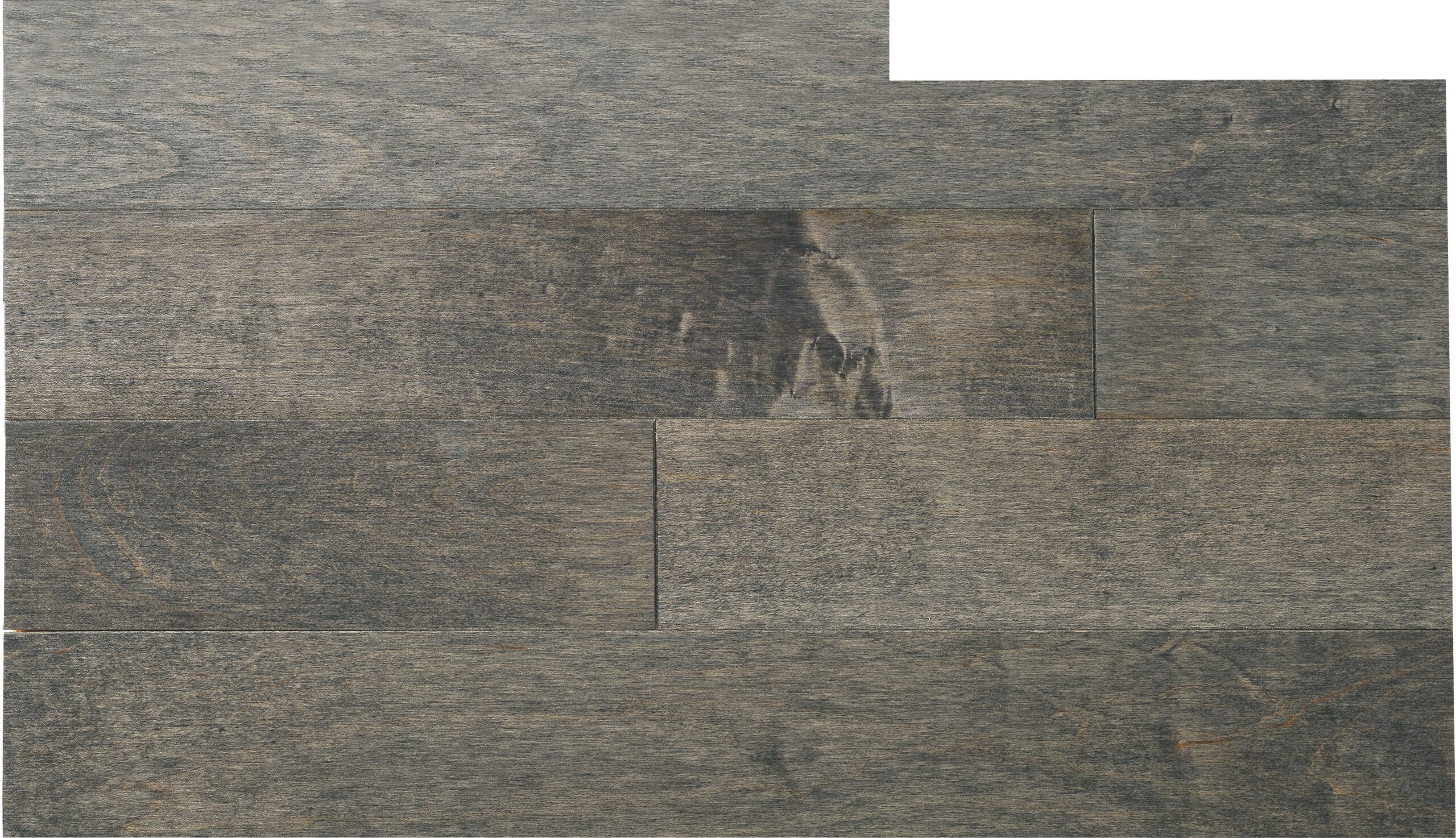
Price: about $4.09 per sq. ft.
Maker: Casa de Colour
Highlights: The gray trend makes its way from walls to floors; one is widely available at Lumber Liquidators.
Shadowy maple brings a contemporary twist to traditional maple flooring. The gray hue adds a modern touch that complements a wide range of color schemes and design styles. This stylish and versatile option works well in both urban and suburban settings, offering a chic, updated look to any home.
Reclaimed Douglas Fir
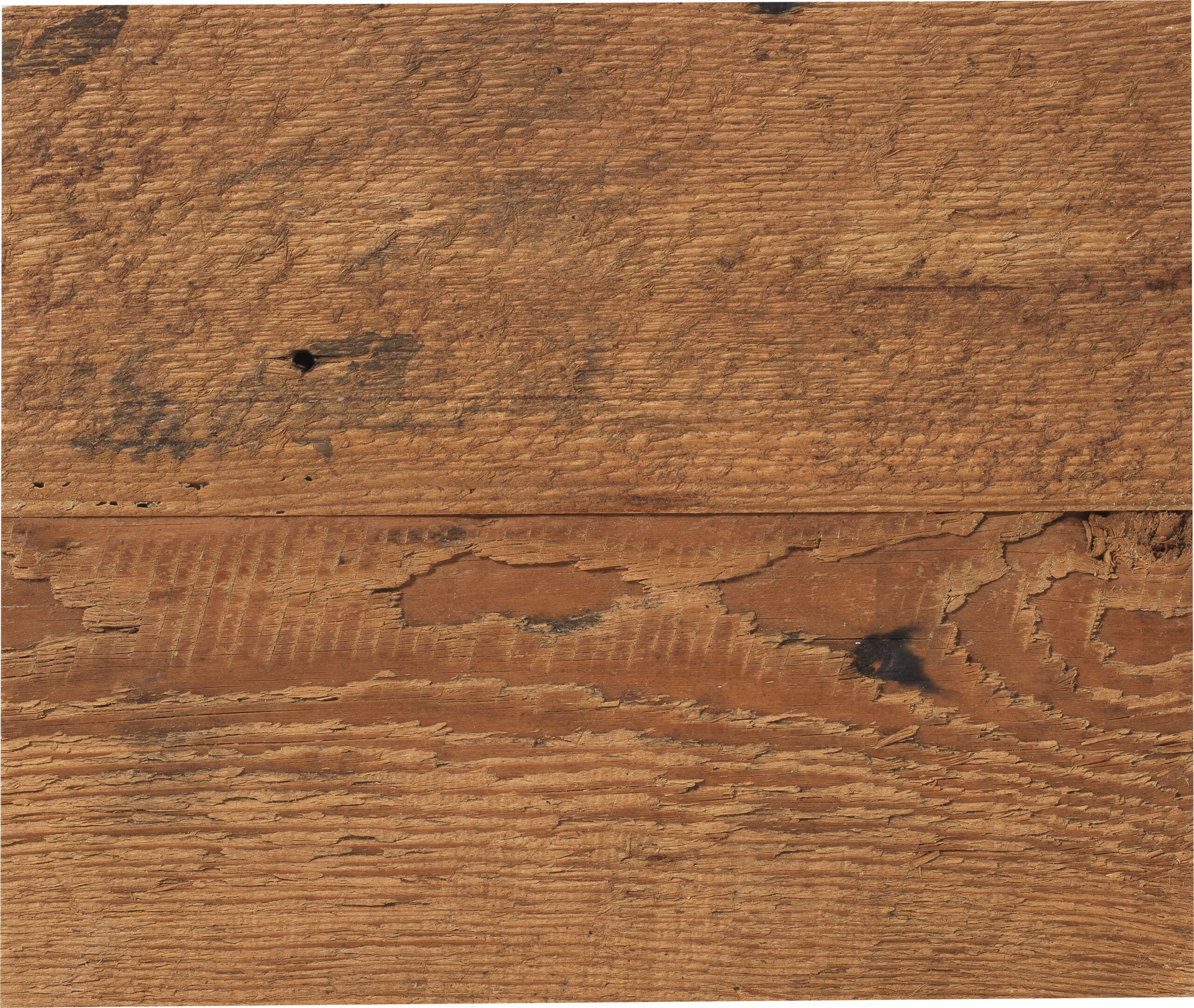
Price: about $10-$11 per sq. ft.
Maker: Viridian
Highlights: Nail holes add a rustic touch; comes in a mix of 4- to 6-inch-wide planks.
Reclaimed Douglas fir offers a sustainable flooring option with unmatched character. The nail holes and varied plank widths tell a story of the wood’s previous life, making each floor unique. This eco-friendly choice not only adds visual interest but also supports environmentally conscious building practices.
Rich Brazilian Cherry
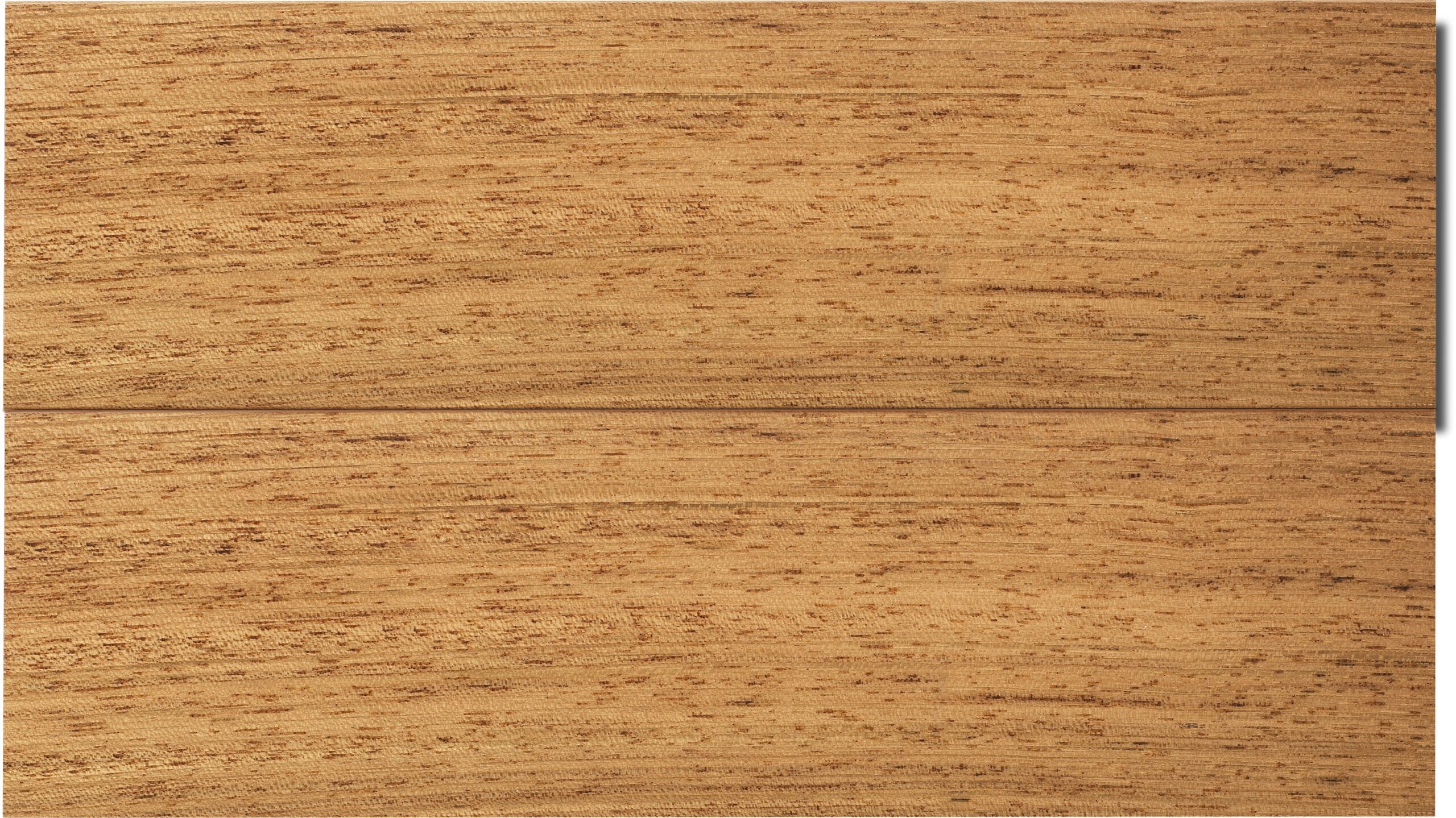
Price: about $8.99 per sq. ft.
Maker: BR-111
Highlights: Its natural orange undertone adds warmth; an exotic, it’s hard to scratch or dent.
Brazilian cherry, known for its rich color and exceptional hardness, is an excellent choice for those seeking a luxurious, long-lasting floor. Its warm tones and resistance to wear make it ideal for high-traffic areas and formal spaces.
Get Rustic Character with Reclaimed Flooring
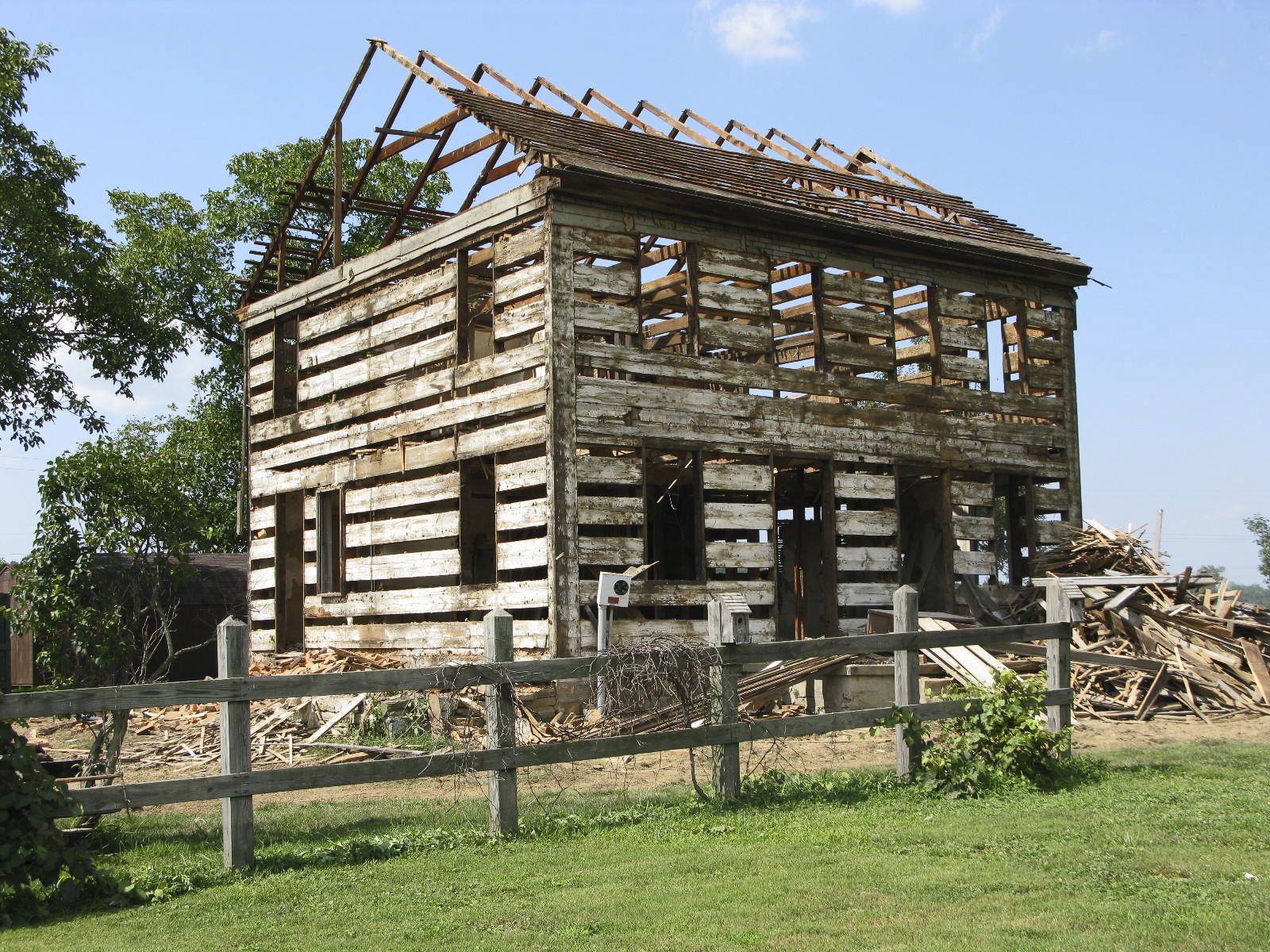
Reclaimed wood flooring offers a unique blend of history, character, and sustainability. Sourced from old barns, factories, or even river bottoms, these boards bring a timeworn appeal to any space. Key benefits include:
- Unique character: Each board tells a story with its nail holes, knots, and patina.
- Increased hardness: Often cut from old-growth trees, reclaimed wood can be harder than freshly harvested timber.
- Eco-friendly option: Repurposing old wood reduces the demand for new lumber.
While reclaimed flooring typically comes at a premium cost, many homeowners find the added cost worthwhile for the unparalleled character and sustainability it brings to their homes. The unmatched charm and environmental benefits make it a desirable option for those looking to make a statement.
Prefinished Wood Alternatives
The Competition: Unfinished Solid Wood
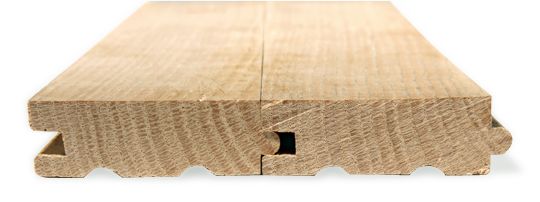
Unfinished solid wood flooring offers an alternative to prefinished options, with its own set of advantages:
- Customization: Allows for on-site staining to achieve the exact color desired.
- Seamless appearance: No bevels between boards create a smooth, uniform look.
- Lower initial cost: Typically $2-$12 per square foot.
However, installation is more time-consuming and usually requires professional expertise. The finishing process can take several days, during which the space is unusable. While refinishing costs may be lower in the long run, the initial installation process is more involved and disruptive. The time and effort required can be considerable, and the disruption to daily life should be factored into the decision.
The Competition: Engineered Wood
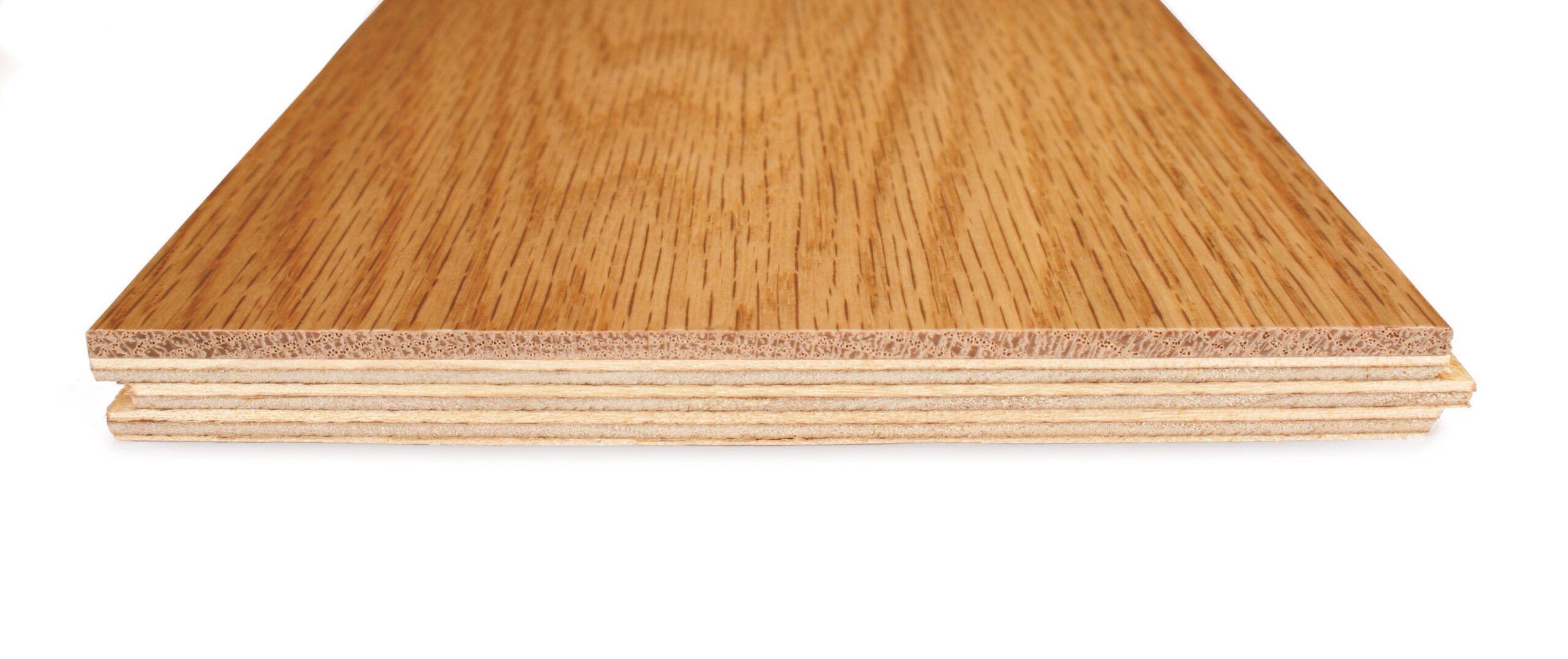
Engineered wood flooring offers a middle ground between solid wood and laminate options:
- Stability: Its layered construction resists warping and can be installed in areas with higher humidity.
- Versatility: Suitable for installation over concrete slabs or in basements.
- Cost-effective: Prices range from $4.50-$16 per square foot, according to Angi.
While engineered flooring can be an excellent choice for many homeowners, its ability to be refinished depends on the thickness of the top veneer layer. Some high-quality engineered floors can be refinished multiple times, while others may only allow for one or two sandings over their lifetime. This versatility makes engineered wood a flexible option for various spaces and conditions.
The Competition: Laminate
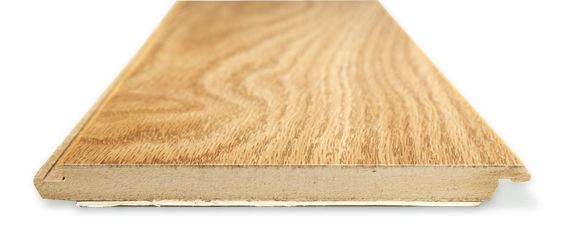
Laminate flooring provides a budget-friendly alternative that mimics the look of wood:
- Affordability: Costs range from $3 to $13 per square foot, via Angi.
- Durability: Resistant to scratches and stains due to its melamine wear layer.
- Easy installation: Many laminate products feature click-and-lock systems for DIY-friendly installation.
However, laminate flooring cannot be refinished and may have a shorter lifespan compared to solid or engineered wood. It also tends to have a less authentic look and feel underfoot. While it offers an economical solution, particularly for temporary or low-traffic areas, the trade-offs in aesthetics and longevity are worth considering.
Prefinished Wood Flooring to Suit Every Style
Warm Craftsman
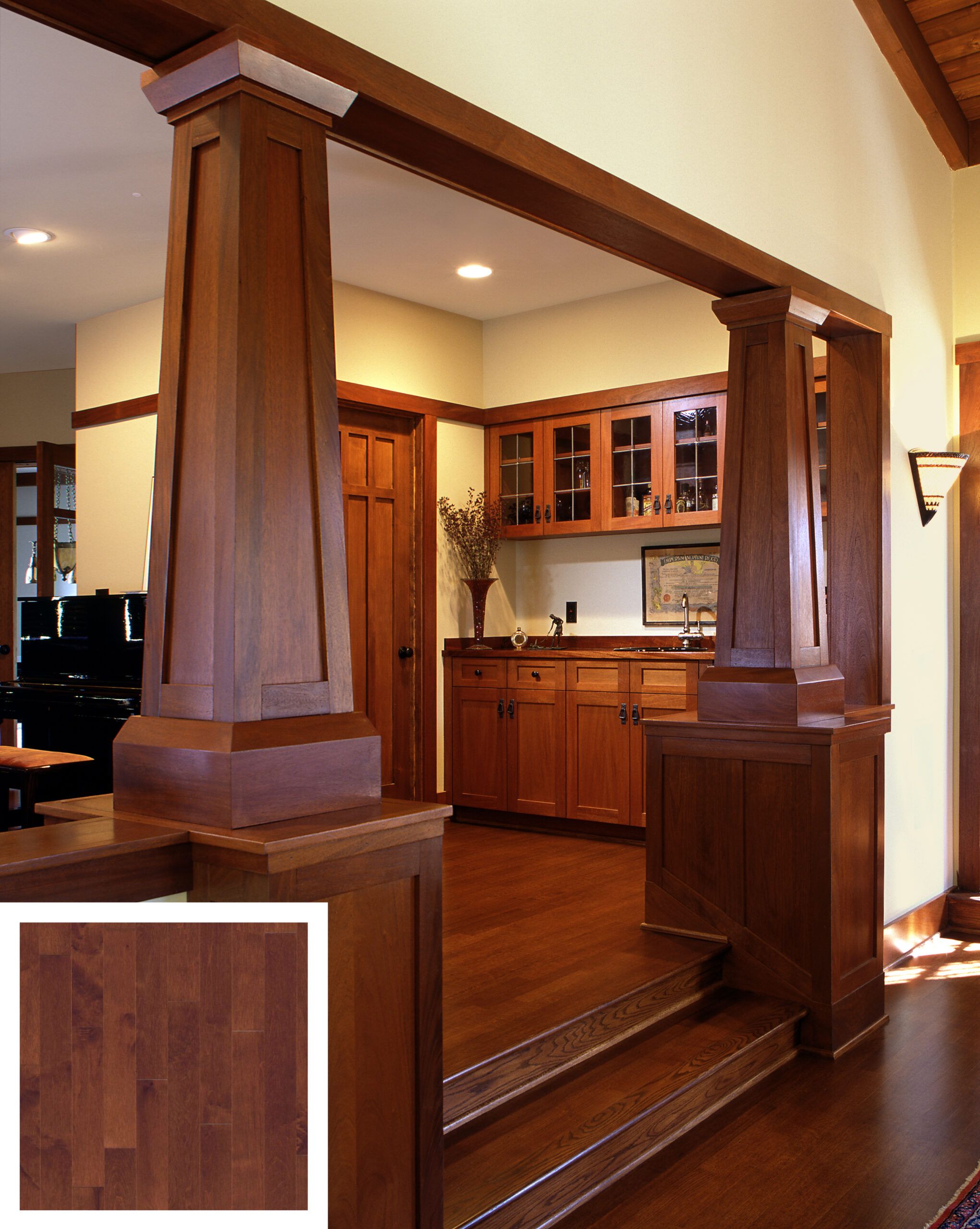
Rich, reddish-brown maple floors add depth to this classic Craftsman home. Using oak on the stair risers and the cabinets creates enough variation in the color to keep the room from feeling one-note.
Similar to shown: 3¼-inch Admiration Maple Canyon, about $10.12 per sq. ft.; miragefloors.com for dealers
Cool Mid-Century
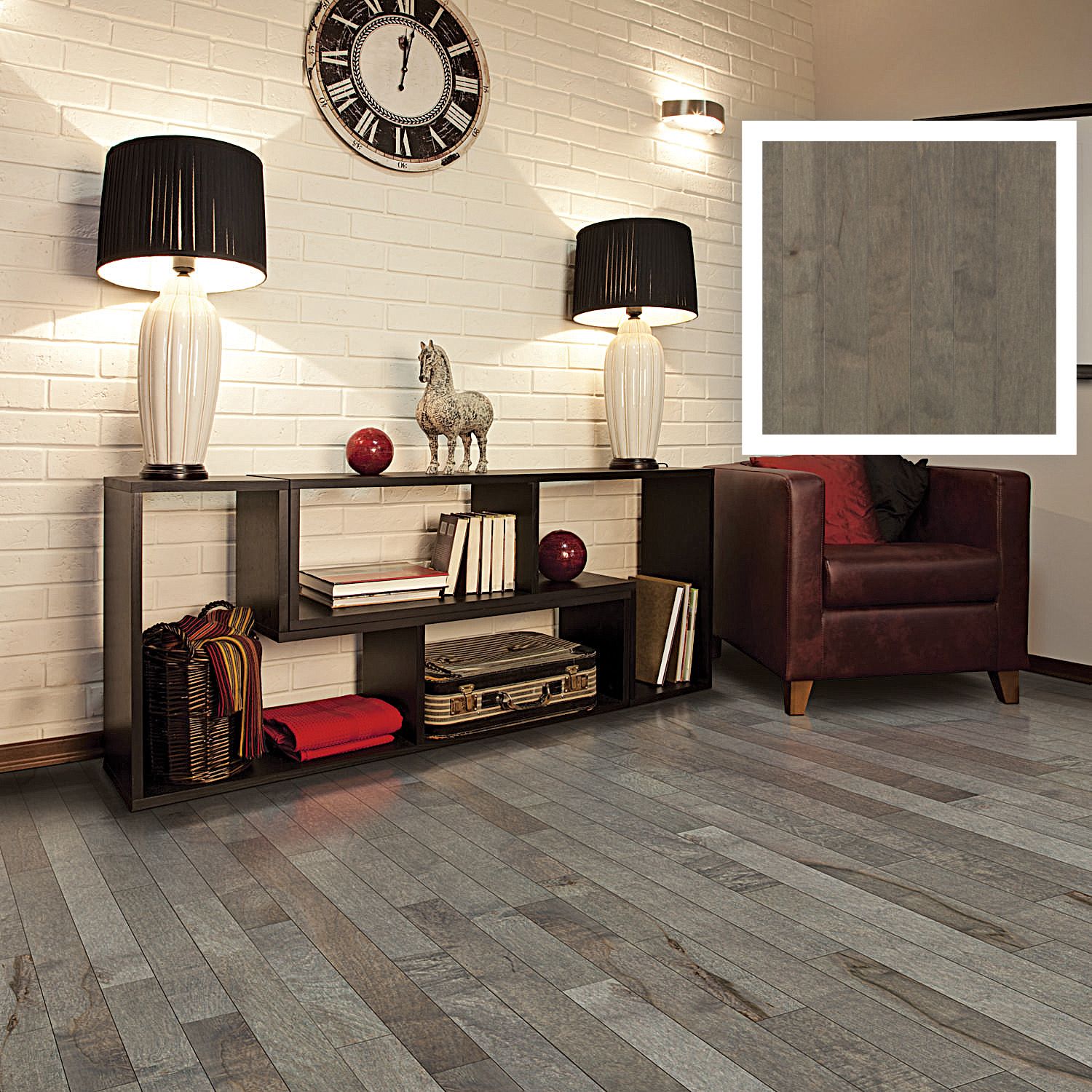
Flooring in a stylish gray finish updates a classic ranch. The hue looks striking against the white-painted brick walls and complements the clean-lined furniture. Vintage accessories, such as the lamp and suitcase, add more personality to the space.
Shown: 3¼-inch Rockford maple in Flint, about $5.95 per sq. ft.; mohawkflooring.com for dealers
Rustic Cottage
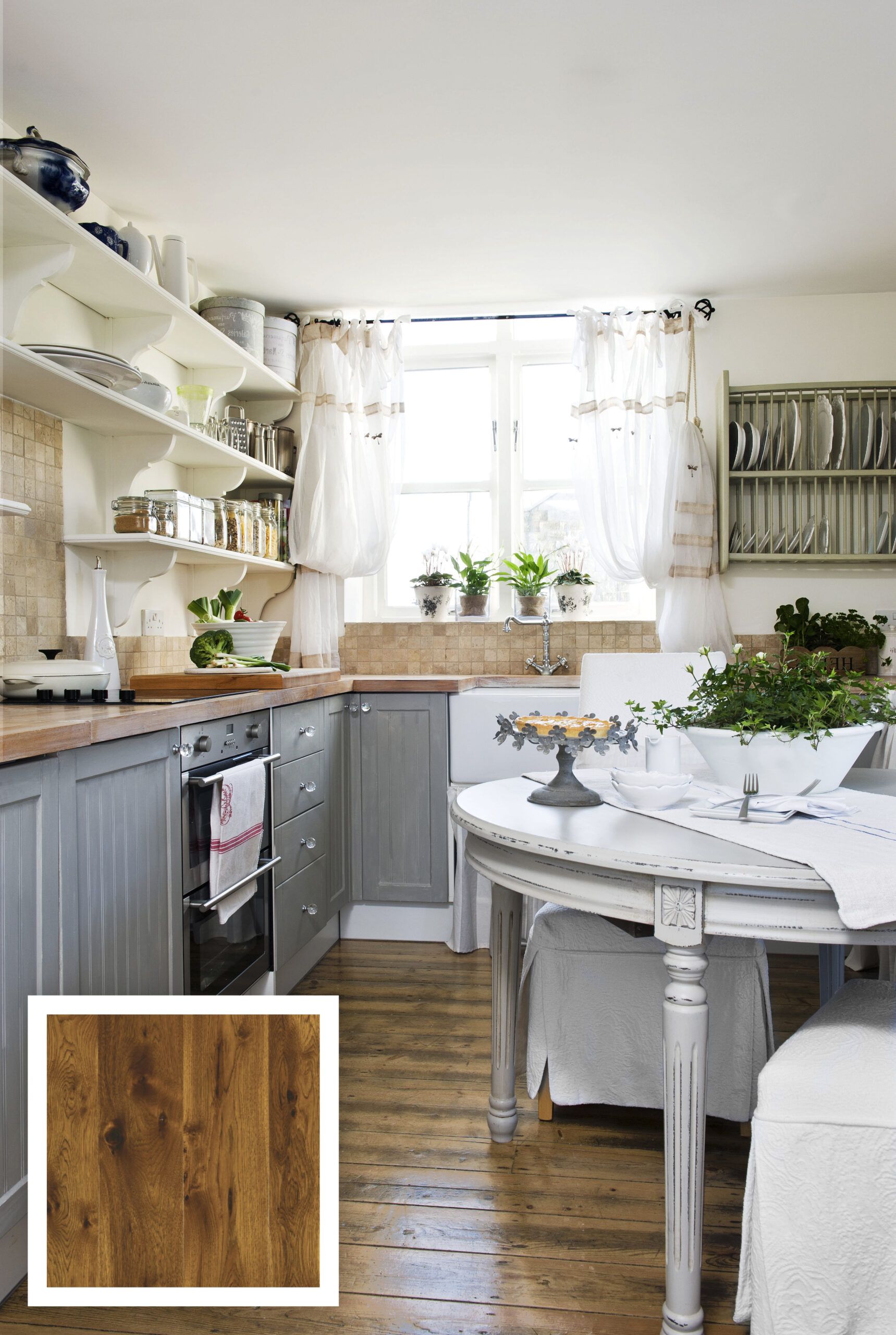
With its noticeable knots and dark finish, wide-plank hickory feels right at home with the painted beadboard cabinets, open shelving, and antique furnishings in this cozy kitchen.
Similar to shown: 8-inch Signature grade hickory in Bradford Umber, about $18 per sq. ft.; wideplankflooring.com for showrooms
Eclectic Traditional
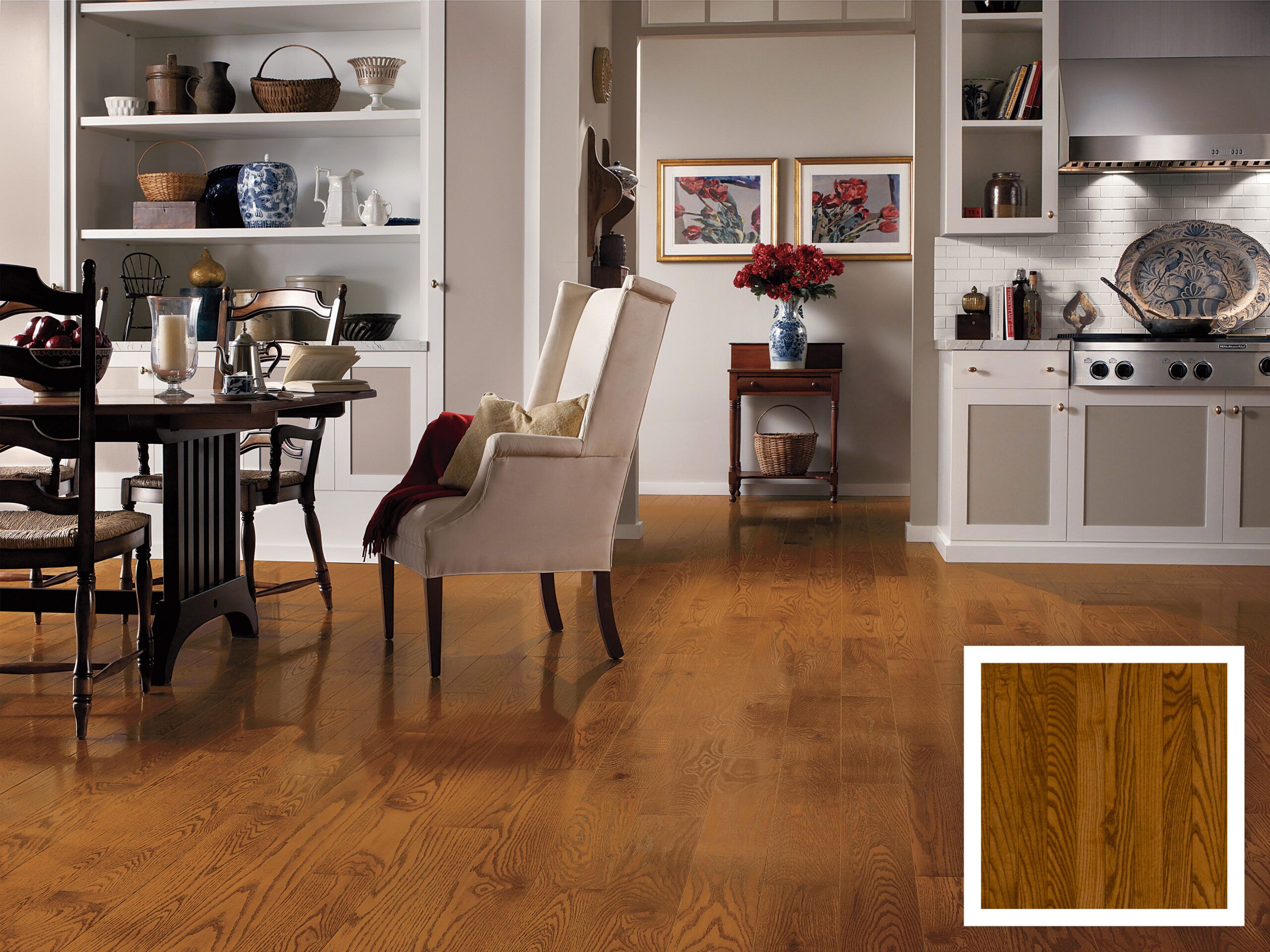
To anchor a dining room that hosts a mash-up of styles—a Mission-style table, classic American ladder-back chairs, and a modern, scaled-down wing chair—stick with a neutral, goes-with-everything flooring, such as oak in a warm golden stain.
Shown: Five-inch Dundee oak in Gunstock, about $6.29-$6.69 per sq. ft.; bruce.com for dealers
Picking a Pattern for Your Wood Flooring
Smart Angle
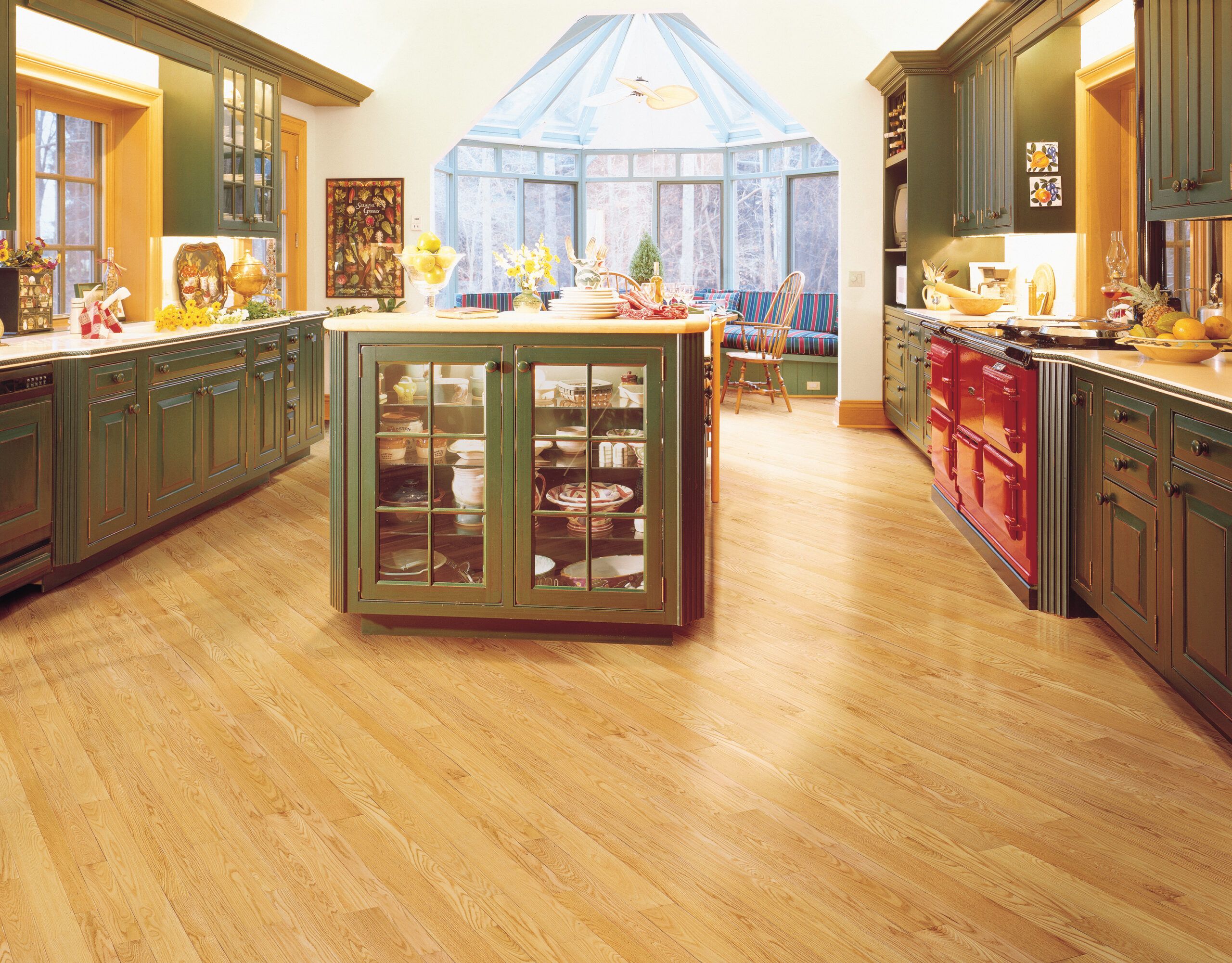
Laying flooring on the diagonal can visually expand a small or narrow room, such as a galley kitchen. It’s also a good solution for older homes that aren’t square, where a parallel-to-the-wall installation might make that flaw more noticeable. And it doesn’t take any more flooring than a typical install.
Shown: 2¼-inch St. Andrews red oak in Natural, about $5.99 per sq. ft.; mullicanflooring.com for dealers
Double Border
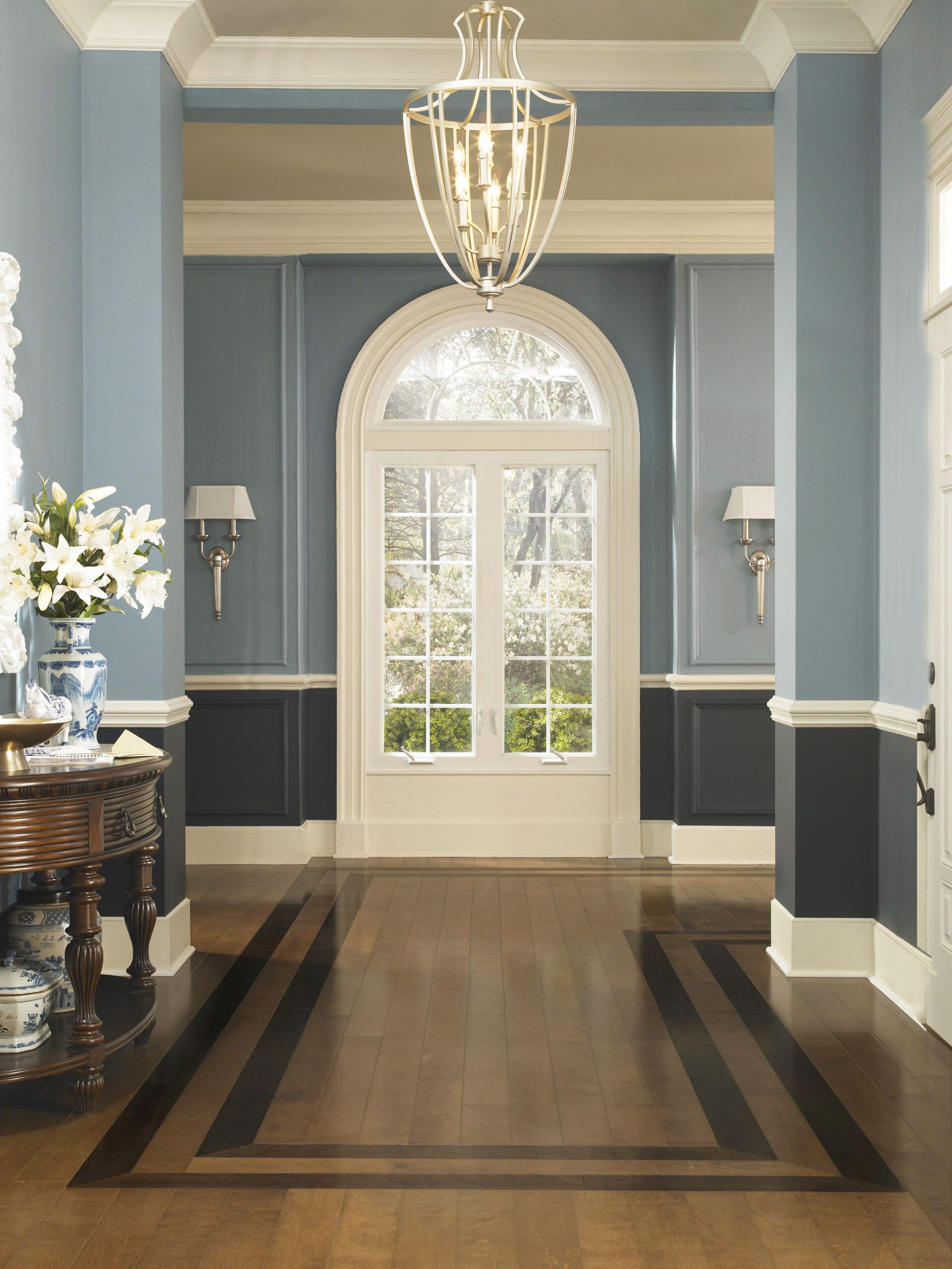
Outlining the floor with two high-contrast stripes creates a decorative border that helps balance the rest of the room’s architectural detail. If you can cut mitered corners on the floorboards, this project should be a cinch to do.
Similar to shown: 3¼-inch Nantucket maple in Summer House Tan and Brant Point Brown, about $8-$10 per sq. ft.; shawfloors.com for dealers
Haute Herringbone
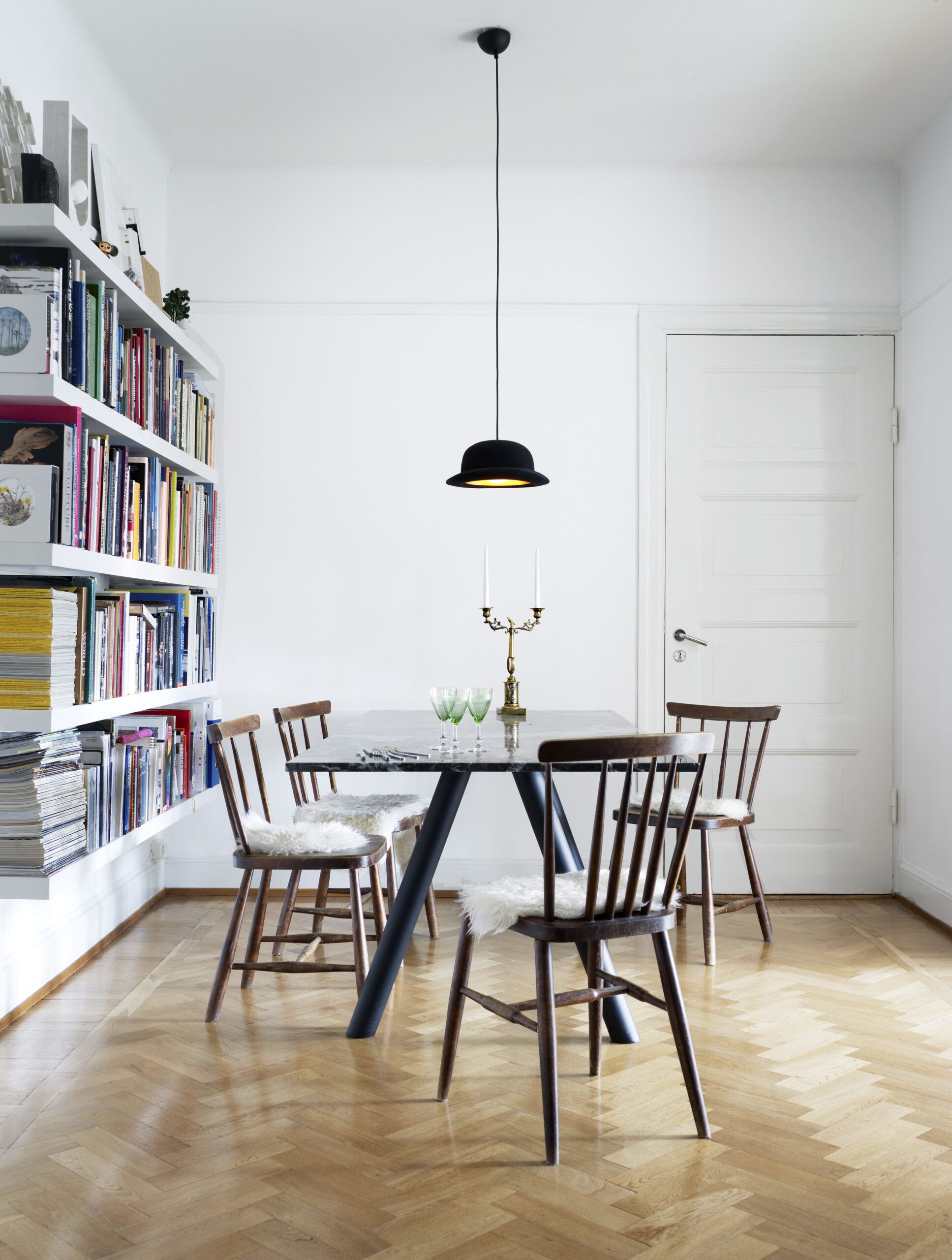
This stylish pattern looks best in rooms that don’t have competing architectural focal points. Precise cuts are key, and, because of the difficulty in laying out the pattern, this is a job best left to pros or experienced DIYers. If you’re up for the challenge, get the how-to here.
Similar to shown: 2¼-inch Bellawood select white oak, about $4.99 per sq. ft.; lumberliquidators.com
Simple Stripes
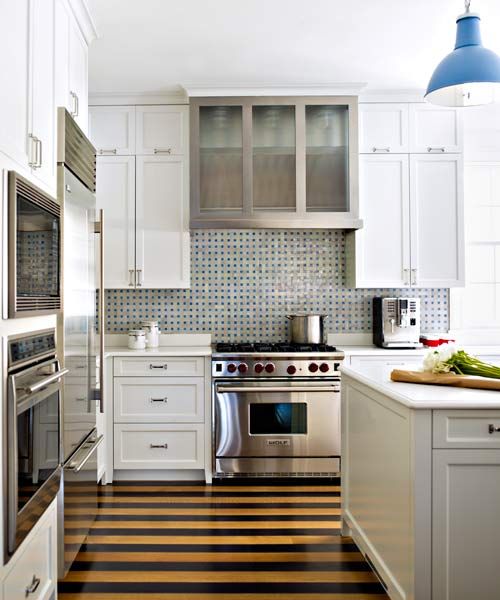
Alternating bands of light- and dark-stained maple bring color and a sense of energy to this otherwise all-white kitchen. Using stripes in a hallway can also be a smart way to create a bridge between rooms with floors that have different finishes.
Similar to shown: Four-inch Kennedale Prestige maple in Natural and Cappuccino, about $8.29-$8.99 per sq. ft.; bruce.com for dealers
DIY Wood Flooring Like a Pro
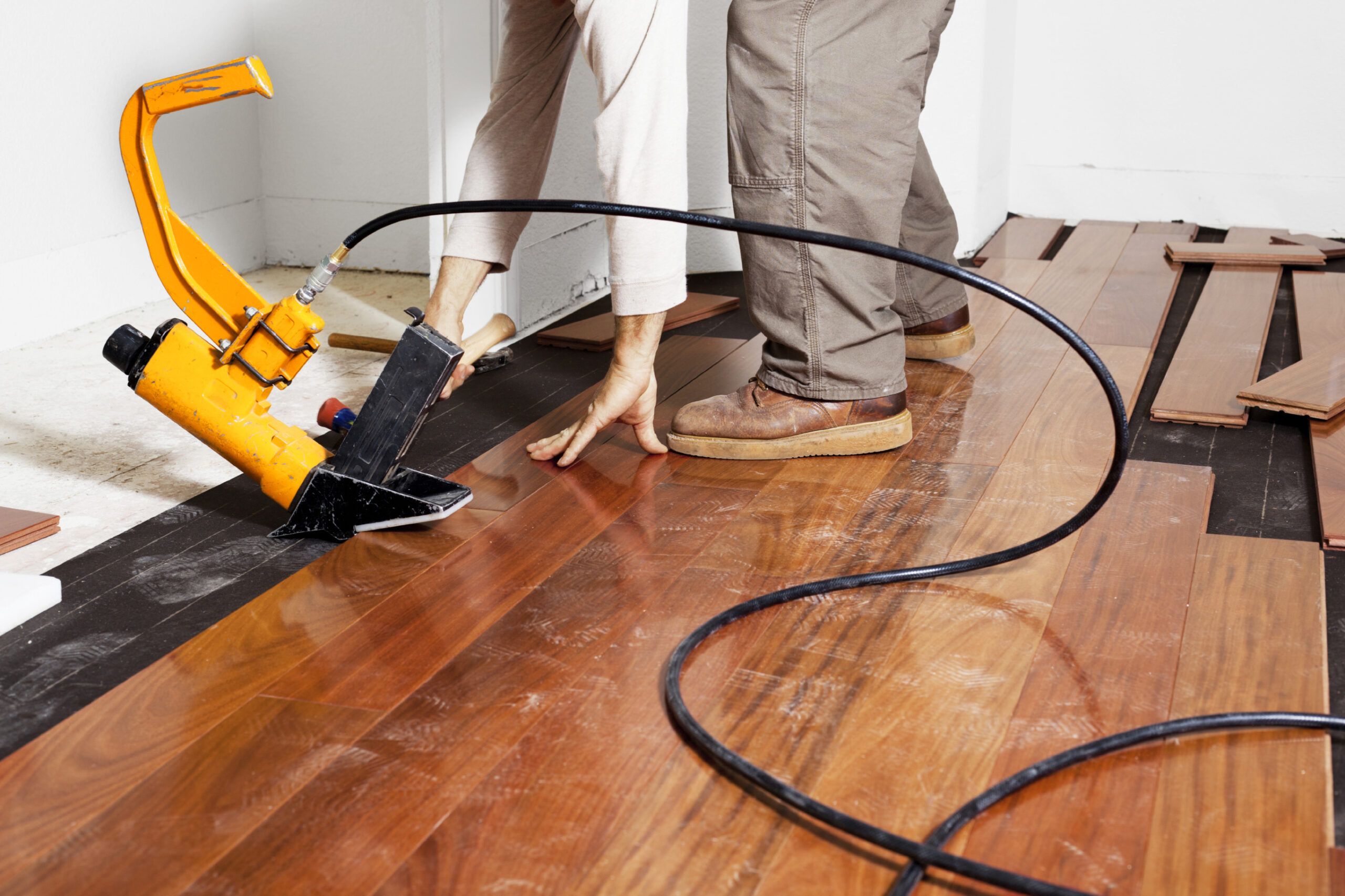
Solid-wood strips and planks have a tongue on one side and a groove on the other, allowing them to interlock. Because the boards shrink and swell, they must be fastened to a plywood subfloor. For best results, keep your home between 60 and 80 degrees Fahrenheit and 30 to 50 percent relative humidity (measure both with a thermometer-hygrometer), and leave flooring in the room where it will be installed for at least a week. This allows the wood to acclimate and prevents issues like cupping and gapping down the road.
Strip Flooring: Face-nail the first board, then toenail the tongues of subsequent strips with a floor nailer or a stapler and a compressor. Ask for the nailer’s adapter plate; it prevents damage to the factory finish. Fasteners driven through the tongue are hidden by the groove of the next board. Be advised: Staples may be cheaper than nails but are more likely to fracture the flooring’s tongues.
Plank Flooring: Wide boards move more than strips do and require additional holding power. Nail or staple planks, as above, applying beads of construction adhesive to the subfloor every foot or so. Or face-nail the boards by hand, using square-head nails for an old-world look.
